
Home » Feature » Goa’s Colonial History: A Tale Of Conquest, Culture, And Commerce

Goa’s Colonial History: A Tale Of Conquest, Culture, And Commerce
- , March 30, 2023

Goa, a state in western India, is known for its beaches, nightlife, and cuisine. However, its history is rich and complex, shaped by centuries of colonization, conquest, and cultural exchange. From the arrival of the Portuguese in the 16th century to the end of colonial rule in 1961, Goa has been a center of commerce, conflict, and cultural fusion.
In this article, we will explore the colonial history of Goa, from the Portuguese conquest to the territory’s integration into the Indian Union. We will examine the political, economic, and social transformations that occurred during this period, as well as the impact of colonialism on Goa’s culture, religion, and identity.
Part 1: The Portuguese Conquest
The Portuguese conquest of Goa is a significant event in the history of India, marking the beginning of European colonialism in the subcontinent. The conquest took place in the early 16th century when a Portuguese fleet led by Admiral Afonso de Albuquerque arrived in Goa and defeated the local ruler, the Sultan of Bijapur.
The Portuguese were motivated by several factors to establish a presence in India, including a desire to access the lucrative spice trade, establish a Christian mission in Asia, and expand their global empire. They also sought to challenge the dominance of Islamic powers in the region, particularly the Ottoman Empire and the Sultanates of Bijapur and Golconda.
The Portuguese initially established a foothold in India through the construction of a fortified trading post at Cochin in 1503, which gave them access to the Malabar coast and the profitable pepper trade. However, they soon realized the strategic importance of Goa, a major center of trade and commerce on the west coast of India. Goa was a bustling port city, with a diverse population of Hindus, Muslims, and Christians, and was home to a powerful sultanate.
In 1510, Admiral Albuquerque led a fleet of ships to Goa and launched a surprise attack on the city. The Portuguese encountered fierce resistance from the local defenders, but were eventually able to overcome them with the help of superior firepower and military tactics. The Sultan of Bijapur, who had previously ruled over Goa, was forced to flee the city, and the Portuguese established a new government in its place.
The Portuguese conquest of Goa had significant political, economic, and social consequences for the region. The Portuguese established a colonial administration in Goa, with a governor appointed to oversee the territory. They also established a system of trade and commerce, with Goa serving as a major center of the spice trade and a hub for shipping and maritime commerce.
The Portuguese also introduced Christianity to Goa, with a focus on converting the local population to Catholicism. They built churches, monasteries, and other religious institutions throughout the territory, and worked to establish a Christian mission in Asia. This led to the spread of Portuguese culture and language, which had a lasting impact on Goan society.
The Portuguese also imposed their own laws and customs on Goa, which had a significant impact on the local population. They introduced a system of taxation and land ownership, which led to the displacement of many rural communities and the concentration of wealth in the hands of Portuguese elites. They also imposed their own social norms and values, which often clashed with traditional Goan customs and practices.
Despite these challenges, Goa remained a vibrant and diverse society, with a rich cultural heritage that reflected its long history of trade, commerce, and cultural exchange. The Portuguese introduced new technologies and methods of production, which had a significant impact on the region’s economy and society. They also contributed to the development of Goan cuisine, music, and other cultural practices, which continue to thrive to this day.
However, the Portuguese conquest of Goa also had negative consequences, including the displacement and marginalization of local communities, the destruction of traditional cultural practices, and the imposition of foreign rule and culture. The Portuguese also implemented a system of forced labor, known as the “corvée system,” which required the local population to work on public works projects without pay.
In summary, the Portuguese conquest of Goa was a significant event in the history of India, marking the beginning of European colonialism in the subcontinent. The conquest had significant political, economic, and social consequences for the region, introducing new technologies, trade opportunities, and cultural exchange. However, it also led to the displacement and marginalization of local communities, the destruction of traditional cultural practices, and the imposition of foreign rule and culture.
Part 2: The Portuguese Empire in Asia
The Portuguese Empire in Asia was one of the most significant colonial powers in the region during the 16th and 17th centuries. The Portuguese, led by explorers such as Vasco da Gama, began their quest for dominance in the Indian Ocean in the early 16th century. They established trading posts along the Indian coastline and soon expanded their influence into other parts of Asia.
The Portuguese were motivated by a desire to control the lucrative spice trade, which was dominated by Arab and Indian traders. They saw an opportunity to bypass the Arab and Indian middlemen and establish direct trade relations with the spice-producing regions of Southeast Asia. The Portuguese were also driven by a desire to spread Christianity to new regions, and they viewed their colonization efforts as a way to spread the Christian faith.
The Portuguese established their first trading post in India in 1498 when Vasco da Gama arrived in Calicut on the southwestern coast of India. They soon established other trading posts along the Indian coastline, including in Goa, which became the center of Portuguese power in India.
In addition to India, the Portuguese also established trading posts in other parts of Asia, including Malaysia, Indonesia, and China. They established a stronghold in the port city of Malacca, which they used as a base for their operations in Southeast Asia. They also established trading posts in Japan and Macau, which became a center of Portuguese trade and influence in China.
The Portuguese Empire in Asia was characterized by its dominance of the sea routes, which enabled it to control the flow of goods and people throughout the region. The Portuguese were able to maintain their dominance through their advanced naval technology, which included the use of the carrack, a large, heavily-armed ship that was capable of long-distance voyages.
The Portuguese Empire in Asia was also characterized by its imposition of colonial rule over the local populations. The Portuguese established a system of governance that was based on the colonial model, which involved the establishment of trading posts and the imposition of political and economic control over the local population. The Portuguese also imposed their religion, language, and culture on the local population, which led to a significant impact on the social and cultural life of the region.
The Portuguese Empire in Asia began to decline in the late 17th century, due in part to the growing competition from other colonial powers such as the Dutch and the British. The decline was also due to the internal weaknesses of the Portuguese Empire, including its lack of resources and manpower, and the corruption and inefficiency of its administration.
Despite its decline, the Portuguese Empire in Asia left a lasting impact on the region. It introduced new technologies, such as the printing press and firearms, and it had a significant impact on the cultural and social life of the area. It also had a lasting impact on the architecture and urban design of many of the cities in the region, including Goa, which still bears the imprint of its Portuguese past.
Part 3: Goa under Portuguese Rule
Goa was under Portuguese rule for over four centuries, from 1510 to 1961. During this period, the Portuguese transformed Goa from a small fishing village to a thriving center of trade, culture, and religion. However, their rule was marked by oppression, exploitation, and cultural suppression, leading to a complex legacy that continues to shape Goan identity today.
The Portuguese arrived in Goa in 1510, led by the explorer Alfonso de Albuquerque. They quickly established a foothold in the region, building forts, churches, and administrative centers. The Portuguese initially viewed Goa as a strategic base for trade with other countries in the region, including China, Japan, and Southeast Asia. They established a monopoly on the spice trade, which was highly profitable, and built a network of trading posts and alliances throughout the Indian Ocean.
Under Portuguese rule, Goa became a center of cultural and religious exchange, with the Portuguese introducing new technologies, languages, and customs to the region. They also brought Christianity to Goa, which became the dominant religion among the local population. The Portuguese built many churches, cathedrals, and convents in Goa, which remain some of the region’s most iconic landmarks.
However, the Portuguese also imposed their culture and religion on the local population, often through force and coercion. They destroyed many Hindu and Muslim temples and shrines and forced conversion to Christianity. They also established a system of forced labor, known as the corvée system, which required the local population to work on public works projects without pay.
The Portuguese rule in Goa was marked by oppression and exploitation. The local population was subjected to harsh taxes, forced labor, and discrimination. The Portuguese also established the Inquisition in Goa in 1560, which was notorious for its brutal methods, including torture and execution. Thousands of people were accused of heresy, and many were killed or imprisoned.
Despite the oppression and exploitation, Goa under Portuguese rule saw significant economic and cultural development. The Portuguese introduced new agricultural techniques, which helped to increase the region’s production of cash crops like sugarcane and tobacco. They also introduced new industries, including textiles, leatherwork, and metalworking, which helped to diversify the region’s economy.
Goa also became a center of education and culture under Portuguese rule. The Portuguese established schools and universities in Goa, which helped to create a new class of educated elites. Goa also became a center of artistic and literary production, with many poets, writers, and musicians producing works in Portuguese and other languages.
In the early 20th century, the Indian independence movement began to influence Goa. Indian nationalists began to organize protests and demonstrations, calling for the liberation of Goa from Portuguese rule. The Portuguese responded with repression and violence, and many activists were arrested and imprisoned.
In 1961, the Indian government launched a military operation to liberate Goa. The operation, known as “Operation Vijay,” was a success, and Goa was finally integrated into the Indian Union. The liberation of Goa was celebrated as a major victory for Indian nationalism, and it marked the end of Portuguese colonialism in India.
Today, the legacy of Portuguese rule in Goa is complex and multifaceted. It left a lasting impact on Goan culture, including the introduction of new technologies, religions, and cultural practices. However, it also led to the displacement and marginalization of the local population, the destruction of traditional cultural practices, and the imposition of a foreign culture and religion.
Part 4: The Indian Freedom Struggle and Goa’s Liberation
The Indian Freedom Struggle was a long and arduous struggle for independence from British colonial rule, which lasted for over a century, from the late 1800s to 1947. The movement was led by prominent figures such as Mahatma Gandhi, Jawaharlal Nehru, and Subhas Chandra Bose, among others. The movement used nonviolent methods of civil disobedience, such as boycotts, protests, and strikes, to challenge British rule and demand independence.
Goa, a former Portuguese colony, was also a part of this struggle for independence. Goa had been under Portuguese colonial rule since the early 16th century and had long been an important center of trade and commerce in the region. The Portuguese had established a highly repressive regime in Goa, characterized by forced labor, religious persecution, and cultural suppression.
The movement for Goa’s liberation from Portuguese colonial rule began in the early 20th century, inspired by the Indian freedom struggle. The first major movement for Goan liberation was the Azad Gomantak Dal (AGD), a political party formed in 1928 that called for an end to Portuguese rule and the establishment of an independent, democratic state of Goa. The AGD organized protests, rallies, and strikes, and also established an underground movement that carried out acts of sabotage against Portuguese rule.
The movement for Goa’s liberation gained momentum in the 1940s, with the establishment of the United Front of Goans (UFG) in 1946. The UFG was a coalition of various political parties and groups that came together to demand an end to Portuguese colonialism and the establishment of a democratic government in Goa. The UFG organized mass protests, strikes, and rallies, and also established an underground movement that carried out acts of sabotage against Portuguese rule.
The Portuguese authorities responded to the movement for Goa’s liberation with brutal repression, including arrests, torture, and imprisonment. However, the movement continued to gain strength, with increasing support from the Indian freedom struggle and other international movements for decolonization.
In 1961, the Indian government launched a military operation to liberate Goa, known as “Operation Vijay”. The operation was a success, and the Portuguese were forced to withdraw from Goa. On December 19, 1961, Goa was formally integrated into the Indian Union as a union territory.
The liberation of Goa was celebrated as a major victory for Indian nationalism and marked the end of Portuguese colonialism in India. However, the legacy of colonialism in Goa continued to shape the state’s politics, economics, and culture, and the struggle for Goan identity and autonomy continues to this day.
Part 5: The Legacy of Colonialism in Goa
The legacy of colonialism in Goa has been a complex and multifaceted one. While colonialism brought with it certain benefits, such as new technologies, trade opportunities, and cultural exchange, it also had many negative consequences that continue to be felt in Goa today.
Economic inequality is one of the most significant legacies of colonialism in Goa. During the colonial period, the Portuguese established a system of plantation agriculture that relied heavily on forced labor. This system resulted in the displacement and marginalization of many indigenous communities, who were forced to work under extremely difficult conditions for very little pay.
Although the system of forced labor was abolished after India gained independence, the legacy of economic inequality has persisted. Today, Goa is a state with a high level of economic inequality, with many people living in poverty while others enjoy great wealth and privilege.
Another legacy of colonialism in Goa has been the imposition of a foreign culture and religion. The Portuguese were known for their aggressive attempts to convert the local population to Christianity, and many Hindu and Muslim temples and shrines were destroyed during the Inquisition. The imposition of a foreign religion and culture has had a lasting impact on Goan society, with many people still struggling to reconcile the competing cultural influences that have shaped their identity.
Furthermore, the Portuguese colonial period led to the destruction of many traditional cultural practices in Goa. The Portuguese were hostile to many aspects of Goan culture, including its music, dance, and dress, which they saw as pagan and uncivilized. As a result, many traditional cultural practices were suppressed or even destroyed during the colonial period.
Despite these challenges, Goa has managed to maintain a rich and diverse cultural heritage that reflects its complex history. Today, Goa is known for its vibrant music and dance traditions, as well as its unique cuisine and festivals. However, the legacy of colonialism is still felt in many aspects of Goan society, including its politics, economics, and culture.
In recent years, there has been a growing movement to reclaim and celebrate Goan culture, and to promote greater awareness of the state’s colonial history. This has included efforts to preserve and promote traditional cultural practices, as well as initiatives to raise awareness about the impact of colonialism on Goan society.
The colonial history of Goa is a fascinating and complex story, shaped by centuries of conquest, commerce, and cultural exchange. From the arrival of the Portuguese in the 16th century to the liberation of Goa in 1961, Goa has been a center of conflict, cooperation, and cultural fusion. Today, Goa is a proud and independent state, with a rich and diverse cultural heritage that reflects its complex history.
However, the legacy of colonialism is still felt in many ways, including the persistence of economic inequality, the marginalization of certain communities, and the ongoing struggle to reconcile the competing cultural influences that have shaped Goan identity.
Despite these challenges, Goa remains a vibrant and dynamic state, with a unique cultural identity that continues to evolve and thrive. The legacy of colonialism in Goa is a reminder of the enduring impact of history on our lives and our societies, and the importance of understanding and learning from our past in order to build a better future.
Follow us...
Trending....

Taking Action: How the People of Goa Can Combat Global Warming
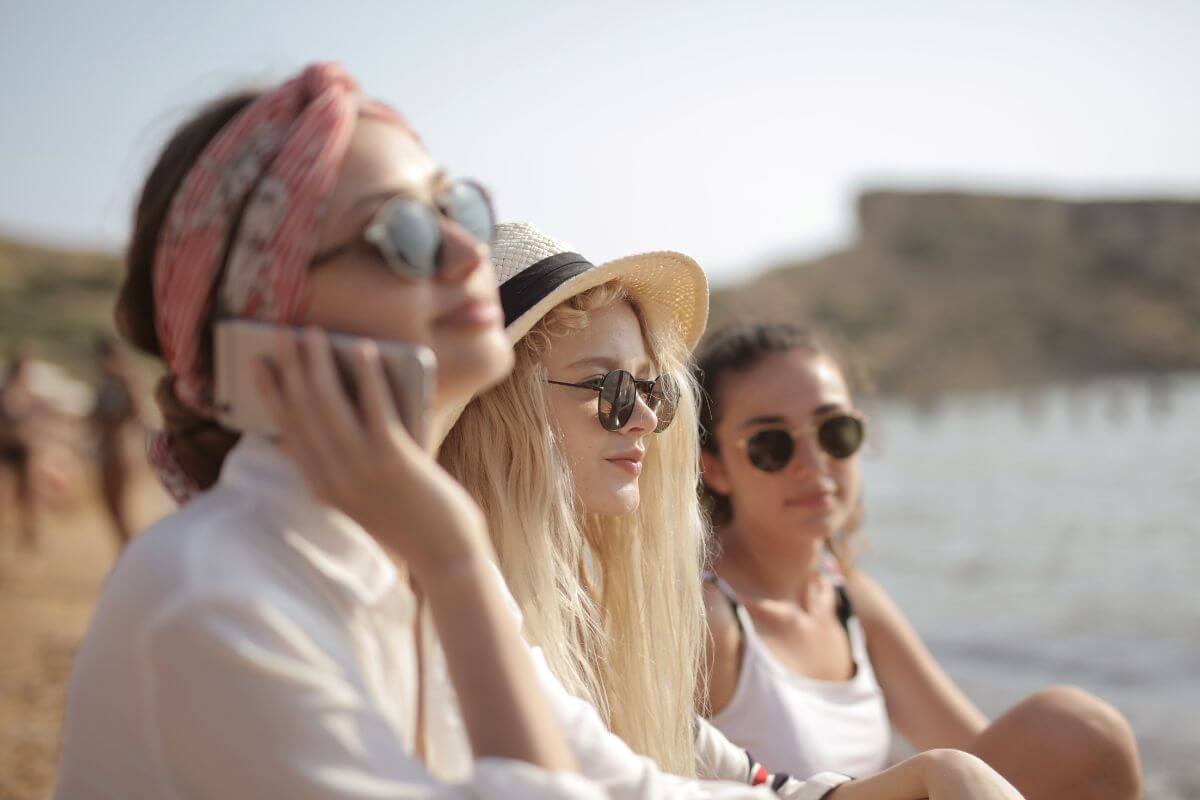
Why Russian Tourists Flock to This Coastal Paradise
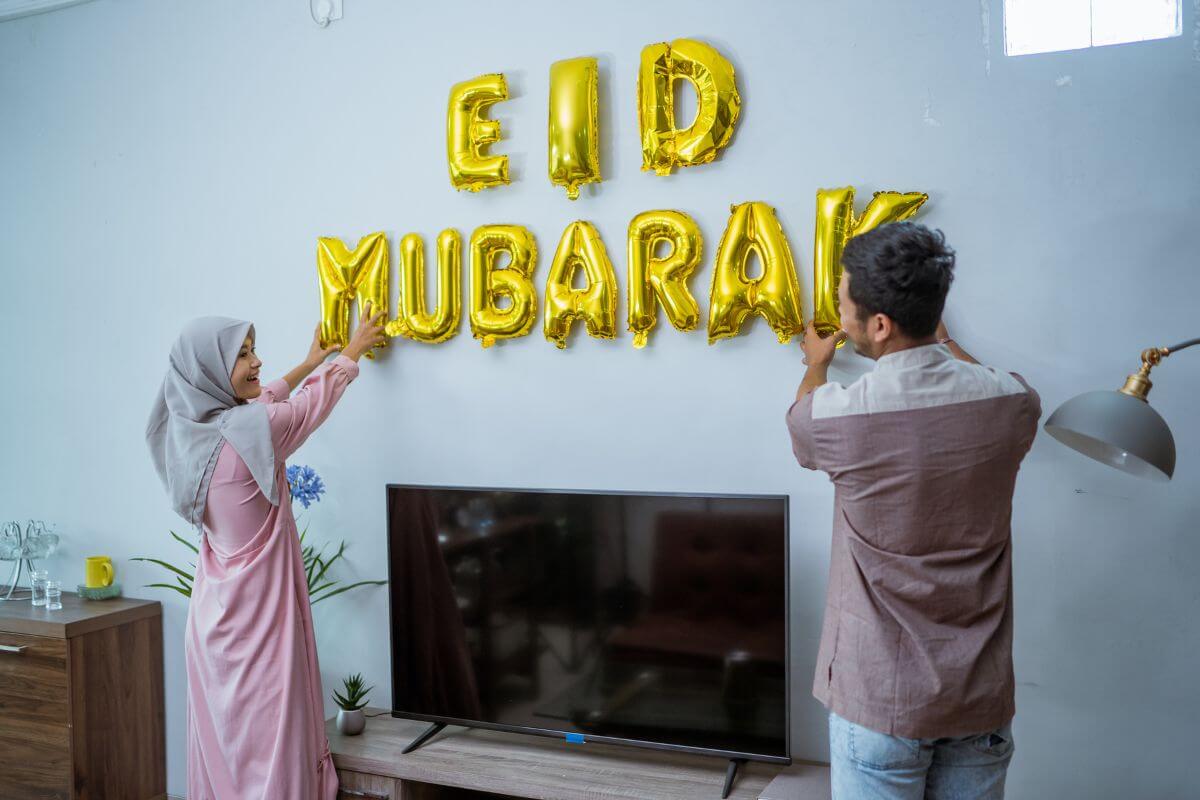
Celebrating Eid in Goa: A Tapestry of Religious Diversity and Unity

The Ultimate 5-Day Itinerary to Explore Goa: Beaches, Forts, and Cultural Delights

Diverse New Year Festivities in Goa: A Cultural Mosaic
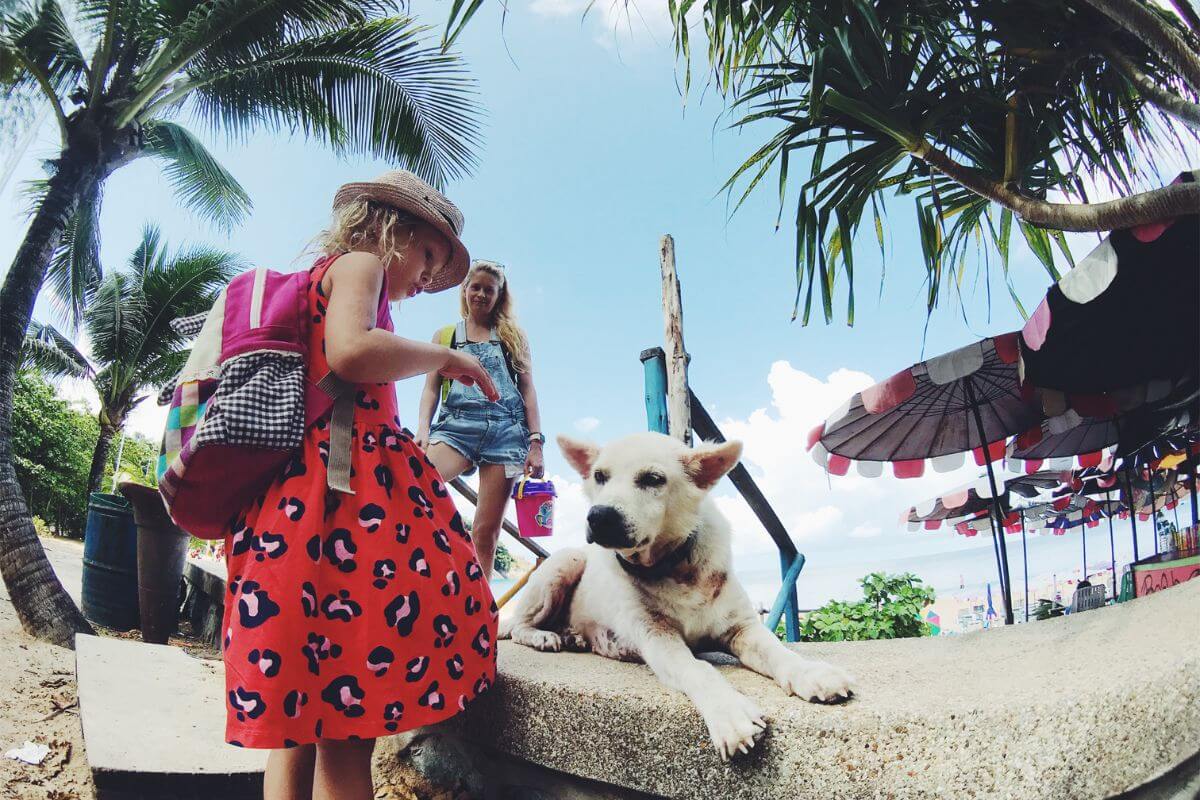
Agoda and Goa Tourism Forge a Dynamic Partnership to Elevate Travel Experiences
Latest news.

Renowned Chef Floyd Cardoz, Co-Owner of Bombay Canteen with Goan Roots Dies of Coronavirus

While the Senior Citizens Bear the Brunt of Taxi Strike in Goa, Locals Create Social Media Group to Help Tourists

Employment Policy will Focus on Job Reservation to Goans

Tourist Makes Video and Post Online After Local Taxi Drivers Forced him out of GoaMiles Taxi at Five Star Hotel in South Goa

Life of Expats in the Gulf is not so Rosy Anymore

Model Code of Conduct, What is it and How it affects the Common Man
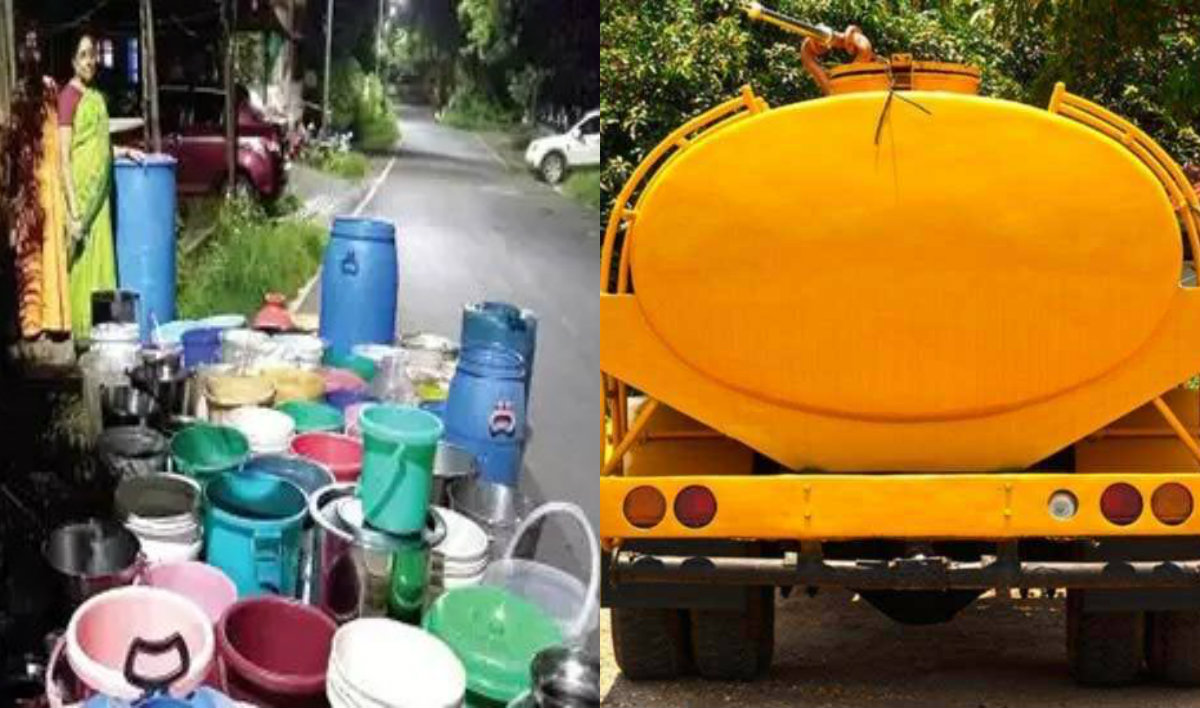
VIP Culture Remains the Winner Even for the Supply of Water in Capital City

Casinos In Goa Will be Fined Heavily If Found Violating The New Goa Gambling Act
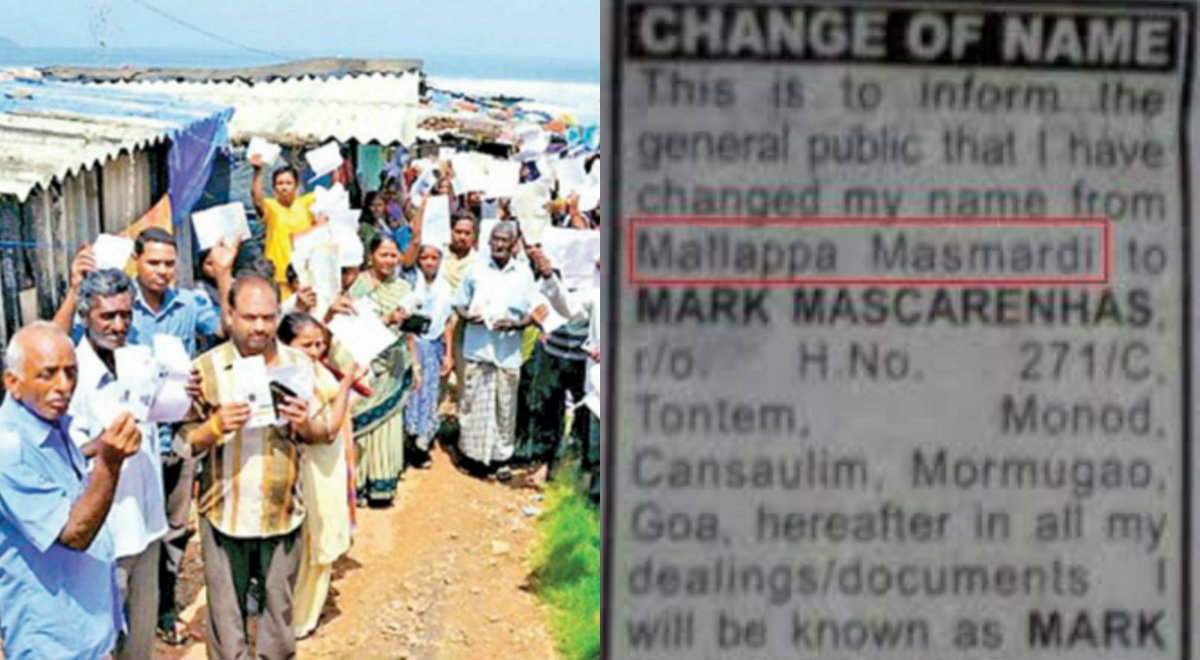
Goan Identities are under Threat with Migrants Changing Their Names?

RBI Clamps Down PMC Bank, Restrictions Imposed, Only Rs. 1000 Withdrawal Allowed Per Account, Tension Amongst Goan Account Holders

Strained Relationships Boosts Divorce Cases in Goa; State Government Plans To Make Premarital Counseling Compulsory
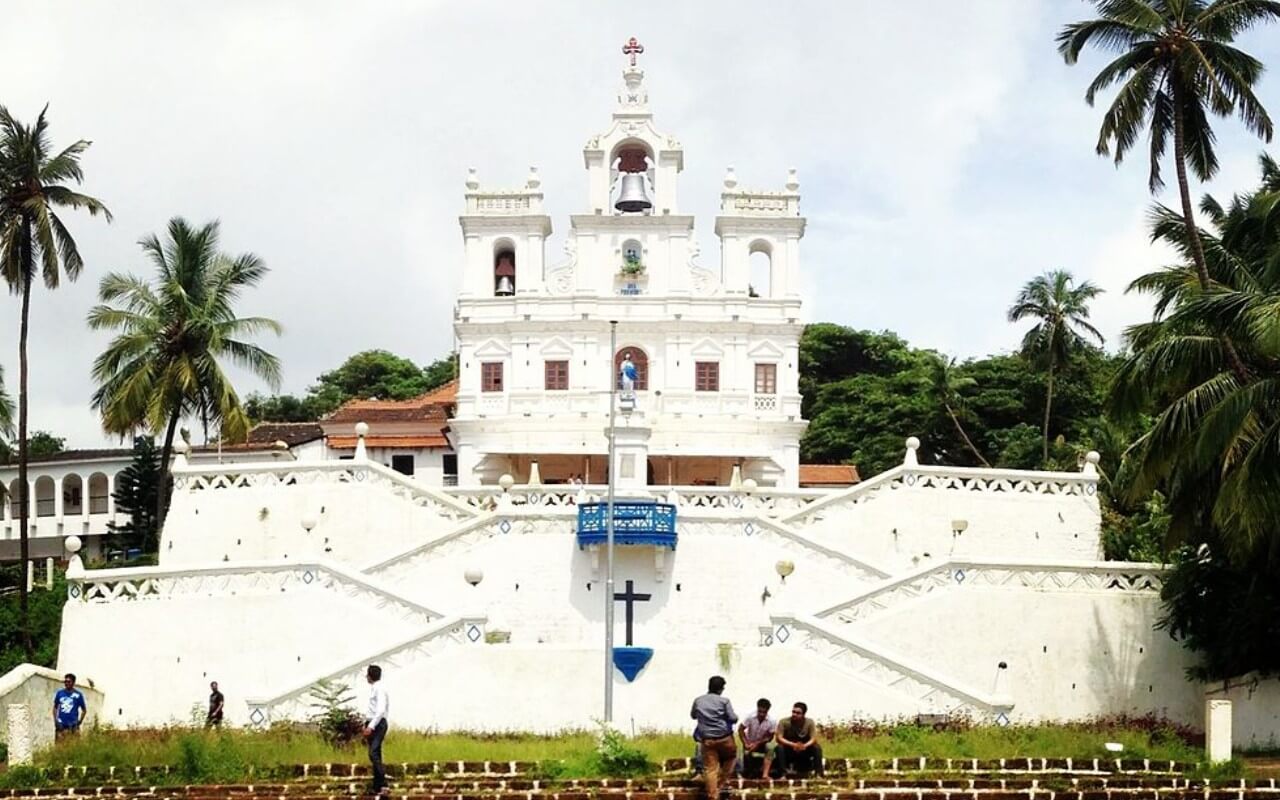
Boosting Goa’s Presence on Wikipedia – Goan Wikipedians Team Gets To Work

Now People with wheelchairs, and other mobility problems will be able to use The Taxi Service in Goa

Goa Tourism To Resurrect The Passenger Ropeway Project Across River Mandovi To Promote Tourism

Discovering The Art and Culture of Goa’s Museums and Galleries
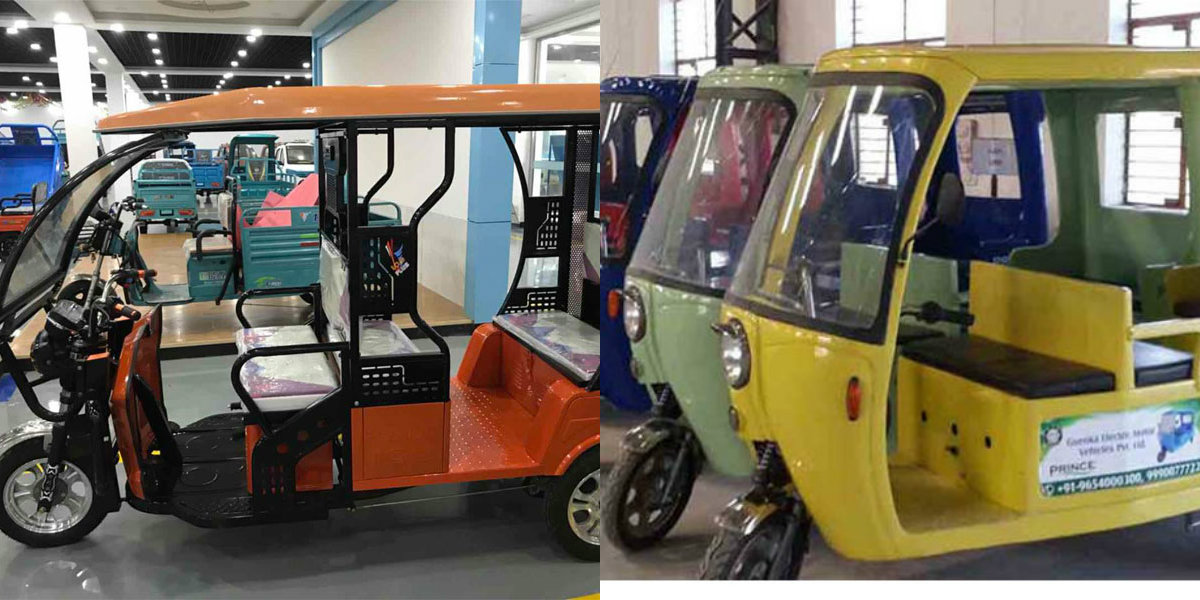
Goan Villages Adapt to Pollution free E-Rickshaw
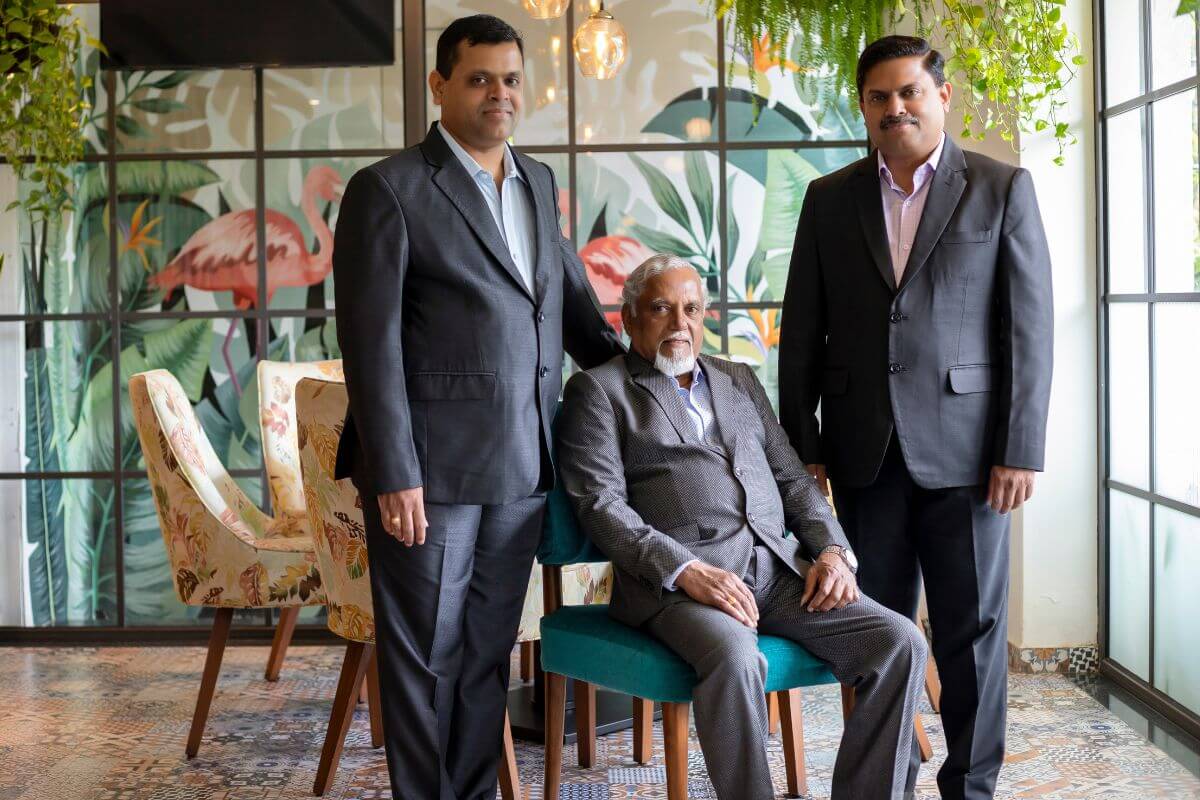
The Pai Bir Family – A Brand in the Making

After the Video of Tourists Claiming That They Have Paid for the Photography went Viral on Social Media, Parra Panchayat Decided to Suspend the Tourist Photography Tax
© 2020 Incredible Goa - All rights reserved
Made with ❤ by Goa Prism Digital Media

Department of Information and Publicity

HISTORY OF GOA
Goa’s known history stretches back to the third century BC, when it formed part of the Mauryan Empire, ruled by the Buddhist emperor, Ashoka of Magadha. Buddhist monks laid the foundation of Buddhism in Goa. Between the second century BCE and the sixth century CE, Goa was ruled by the Chutus of Karwar as feudatories of the Satavahanas of Kolhapur (second century BCE to the second century CE), Western Kshatrapas (around 150 CE), the Abhiras of Western Maharashtra, Bhojas of the Yadava clans of Gujarat, and the Konkan Mauryas as feudatories of the Kalachuris. The rule later passed on to the Chalukyas of Badami, who controlled it between 578 to 753, and later the Rashtrakutas of Malkhed from 753 to 963. However from 765 to 1015, the Southern Silharas of Konkan ruled Goa as the feudatories of the Chalukyas and the Rashtrakutas. Over the next few centuries, Goa was successively ruled by the Kadambas as the feudatories of the Chalukyas of Kalyani. They patronized Jainism in Goa.
In 1312, Goa came under the governance of the Delhi Sultanate. However, the kingdom’s grip on the region was weak, and by 1370 they were forced to surrender it to Harihara I of the Vijayanagara empire. The Vijayanagara monarchs held on to the territory until 1469, when it was appropriated by the Bahmani sultans of Gulbarga. After that dynasty crumbled, the area fell to the hands of the Adil Shahis of Bijapur who established as their auxiliary capital the city known under the Portuguese as Velha Goa.
In 1510, the Portuguese defeated the ruling Bijapur kings with the help of a local ally, Timayya, leading to the establishment of a permanent settlement in Velha Goa (or Old Goa).
The Portuguese converted a large portion of their subjects in Goa to Christianity. The repeated wars of the Portuguese with the Marathas and the Deccan sultanate, along with the repressive religious policies of Portuguese led to large migrations of Goans to neighbouring areas. Goa was occupied by the British between 1812 and 1815 during the Napoleonic Wars.
In 1843 the capital was moved to Panjim from Velha Goa. By mid-18th century the area under occupation had expanded to most of Goa’s present day state limits. Simultaneously the Portuguese lost other possessions in India until their borders stabilised and formed the Estado da India Portuguesa, of which Goa was the largest territory.
After India gained independence from the British in 1947, Portugal refused to negotiate with India on the transfer of sovereignty of their Indian enclaves. On 19 December 1961, the Indian army with Operation Vijay resulted in the annexation of Goa, Daman and Diu into the Indian union. Goa, along with Daman and Diu was made into a centrally administered Union Territory of India. On 30 May 1987, the Union Territory was split, and Goa was made India’s twenty-fifth state, with Daman and Diu remaining Union Territories.

Brief history of Goa
Goa, a tiny emerald on the west coast of India, with its natural Scenic beauty, abundant greenery, attractive beaches, historical temples and churches, colourful feasts and festivals, and above all warm and hospitable people with a rich cultural milieu, has today emerged as an ideal tourist destination worldwide.
Ensconced on the slopes of the Western Ghats, Goa is bounded on the North by Sindhudurg District of Maharashtra, on the East by Belgaum and on the South by Karwar Districts of Karnataka, and on the West by the Arabian Sea.
Spread over an area of 3702 Sq. Kms., and a maximum altitude of 1022 metres from the sea level, Goa has a tropical climate with a maximum rainfall of 130 to 140 inches between June and September. The population of Goa is around 1.4 Million.
Goa was liberated on 19th December 1961 along with overland pockets of Daman & Diu from 451 years Portuguese Colonial Rule, marking the culmination of the efforts of scores of Freedom Fighters, both Hindus and Christians, some of whom even laid down their lives in the struggle for freedom and was initially administered as a Union Territory. Goa later became the 25th State of the Indian Union when it was conferred Statehood on 30th May 1987.
Goa has today emerged as a symbol of secularism with harmonious co-existence prevailing between people of various faith irrespective of whether they are Hindus, Catholics or Muslims, imbibed with the spirit of “Sarva Dharma Sarva Bhava” or equal respect for all the religions.
The State of Goa has a 40 Member Legislative Assembly. Besides, Goa has 03 elected representatives in the Central Parliament. The Governor is the Head of the State who is advised by a Council of Ministers headed by the Chief Minister. Both the Goa Legislative Assembly and the Government Secretariat are located on the Porvorim hillock overlooking the picturesque Capital City of Panaji. For administrative purposes, the State has been divided into two districts : North Goa and South Goa with headquarters at Panaji and Margao respectively, with six Talukas representing each district. The Official language is Konkani in Devnagiri script. However, use of English, Hindi and Marathi is also allowed.
- Increase Font
- Decrease Font
- Black & White
- Inverse Colors
- Highlight Links
- Regular Font
Museum of Goa
Goa’s history as Art and Inspiration
Dastkari haat samiti.
Window Modeling: Museum of Goa (2019) by Subodh Kerkar Dastkari Haat Samiti
Subodh Kerkar was born just 2 years before the liberation of Goa from Portuguese rule. He spent his childhood walking on the beaches with his artist father, Chandrakant Kerkar. These walks consolidated his relationship with his father and the ocean. He is the Founding Director of the Museum of Goa (MOG) and has exhibited widely in India and abroad, in galleries and in museums.
Window Modeling: Museum of Goa (2019) Dastkari Haat Samiti
The familiar image of a Goan householder seemingly sitting on a seat on the balcao of her home greets visitors at the entrance of the Museum of Goa, giving a taste of the artistic ingenuity and fun inside.
The gaur is the mighty bull so this iron bull is a nod to the origins of the name Goa which refers to the land of cattle herders. The sculpture surprises unexpectedly as it welcomes visitors when they reach the Museum of Goa at the far end of an industrial estate.
One finds terracotta sculptures of roosters adorning the roofs of many Goa houses. This perhaps is influenced by the Portuguese symbol, “Galo de Barceló’s”. One of the most popular folk songs of Goa “kaibarelo kombdo mhaka main mhagya dilelo” (what a lovely rooster given to me by my mother), is more than 400 years old. The sculpture is an ode to that song.
Window Modeling: an egg and the vice (2019) by Subodh Kerkar Dastkari Haat Samiti
Title: An egg and the vice. A vice is an instrument to hold ‘things’, so that they could be ‘worked on’. The object held by a vice has no choice. For the artist, the egg represents the child and the vice, the social conditioning mechanism.
Window Modeling: Jackfruit (2019) by Subodh Kerkar Dastkari Haat Samiti
Subodh Kerkar explores the genetics and ancestry of natural materials after he found a burnt-out interior of a jackfruit tree trunk with its interior remaining intact. His Jackfruit is covered with a thorny surface. The genetic information off that surface is incorporated in the trunk.
Artwork inspired from Goa
Subodh has created a large body of work based on Goa’s histories, which become a recurring theme. His installations are heavily washed by the ocean, both literally and metaphorically. He creates his ephemeral installations using thousands of mussel shells, pebbles, palm leaves, boats, fishermen and sand.
Titled 'The Old man and the Fish', these are ‘twin’ sculptures, one created with laterite stone and the other with iron nuts welded together. The sculpture celebrates Goa’s love for fish and has references to Ernest Hemingway’s celebrated novel, ‘The old man and the sea’. The sculpture also explores juxtaposition of materials. Laterite stone is found in abundance in Goa and is used for construction of homes. It is rusty red in colour due to the high content of iron oxides.
This work called Triumphant Trio by Viraj Naik stretches across a 7m by 5m canvas. In 1502, Vasco-da-Gama set out on his second voyage for the Malabar Coast. They came upon a coastal ship, when hailed by the lookouts, did its best to escape. The Portuguese sank it and the owner of the ship, Thimmaya, was produced before the captain. Usually, the fate of such prisoners was immediate death, but Thimmaya not only managed to avoid execution, but also got himself appointed as a local agent.
About his work Mussel Shells Ocean, artist Kerkar says: "I have planted thousands of mussel shells in a pattern, some showing the silvery inside, others with their green backs facing the viewer". When you go around the installation, the pattern changes like a silk carpet. The work is dynamic, like the ocean itself.
The artist says his shell works celebrate the ocean. Civilizations originated on the seashore and impacted one another by traveling across the oceans. The waves which wash the shores of Goa have shaped not just rocks, but our entire lifestyle. If we think of our culture as a sculpture, then the ocean is the sculptor. The shells recall the iridescent ones used in Goa’s windows.
The artist tells the story of this creative work: “One of my friends from my village Keri noticed an anchor completely covered with oyster shells lying in mud in the Tiracol River. It must have been there for quite a few years. He thought that the muddy anchor could be of interest to me. I retrieved the anchor and spent many days cleaning it carefully. Then I took it to the car wash and had it further cleaned with strong jets of water. The muddy anchor metamorphosed into a stunning sculpture”. The anchor was truly anchored at the bottom of the ocean inviting the ocean to clad it with oyster shells.
Window Modeling: 150 Natals (2019) by Subodh Kerkar Dastkari Haat Samiti
Natal tells of Indo-Portuguese houses, an important part of the Goan cultural ethos. Most of these houses were constructed in the second half of the 19th century. Most Catholics paint the exterior of their houses annually before Christmas (Natal in Portuguese). There is a large dilapidated house, belonging to the Gomes family, which is over 150 years old.
This house must have received at least 150 coats of lime. The first 30 years or so it was painted white, followed by about 40 layers of lime mixed with indigo. The following generations decided to use red oxide. For the last fifty years the house has received coats of yellow ochre. Subodh Kerkar uses pieces of the wall to create this work to show its layered history.
No other commodity imported into India has affected the life of Indians as much as chillies have. Indian cuisine used pepper and other spices until chillies arrived in Goa on a Portuguese caravel coming from South America sometime in the early 16th century. So, if there is ever to be a monument in honour of chillies, it would have to be erected in Goa. Here, Kerkar, the artist, has used fibreglass, rubber tyres and cotton fabric to create them in his Museum of Goa.
Window Modeling: Oysters on the plate (2019) by Subodh Kerkar Dastkari Haat Samiti
Ocean as an inspiration for Kerkar's Work
The ocean is both inside and outside of Kerkar's works, his master and his muse. He has also created large works on the seashore, which are often infused with politics and history. Technology plays a very important role in the creation of his works. In fact, often technology actually inspires his ideas. The Museum of Goa is envisioned less as a repository of objects,and more as a laboratory of ideas where all art forms are in constant dialogue with each other.
Window Modeling: Windows - Souvenirs (2019) Dastkari Haat Samiti
The Museum of Goa is envisioned less as a repository of objects, and more as a laboratory of ideas where all art forms are in constant dialogue with each other. The present souvenir replicas of the windows of Goa, with new technology, sizes, and a strong social goal, were brought back into focus after acquiring a new form and use under his guidance.
Window Modeling: Slave Fork (2019) by Subodh Kerkar Dastkari Haat Samiti
The cowrie shell installation called, 'The Slave Fork' depicts the history of thousands of slaves from various Bantu tribes were brought by the Portuguese to Goa. Old Goa was an important emporium of slave trade. The square in front of the Sé Cathedral, Tesseiro da Sabaio (Adilshah Square), was the main venue of the slave market.
The journey of these slaves began deep in the interiors of Mozambique. Portuguese slaving agents, Pombeiros, roamed the interior regions of Africa, purchasing slaves from local chieftains. Forked branches of trees were used to tie two slaves together so they didn’t escape.
Men, women and children were sold for cowry shells, or Zimbo, which was a currency in this region. Sometimes the slaves were bartered for cotton, rock salt, gun powder, glass beads or just a bottle of brandy.
Kerkar the artist bought a large number of ceramic plates over a hundred years old from an antique dealer. These plates would have probably arrived in Goa on Portuguese caravels. He put them in an iron cage and kept them on the ocean floor for six months, where the ocean covered them with oysters.
Window Modeling: The Ocean Combs (2019) by Subodh Kerkar Dastkari Haat Samiti
Many honey comb forms were created in fibre glass and placed on the ocean bed for 2 years. The ocean created oyster shells on the artist’s ‘honey’ combs converting them into ‘ocean’ combs.
By collaborating on this fibre glass work with the ocean over a series of experiments, Kerkar made the ocean his partner in art.
Crafts Maps of India - Goa - 2 (1993-2010) by Jimmy Devasia Dastkari Haat Samiti
Read more here: - Goa’s Windows: A heritage of shell work - Fashioning Goa’s windows: A new craft is born
Text : Jaya Jailty Photography : Chirodeep Chaudhuri Artisans : Kavita Singh, Swarupa Kamli, Ground Facilitator : Ankit Kumar, Sharda Documentary Video : Chirodeep Chaudhuri Curation : Ruchira Verma
The Many Faces of Purulia Masks
Women add a special touch to the jutti, puanchei products, recycling elephant dung to paper in rajasthan, the specialist weavers of assam, jamdani sarees, fashioning goa’s windows, a gallery of gond artists, makers of the famed patiala jutti, mobilizing the ramie grass community in meghalaya.

- Firstpost Defence Summit
- Entertainment
- Web Stories
- Health Supplement
- First Sports
- Fast and Factual
- Between The Lines
- Firstpost America

Goa Liberation Day: 60 years of freedom for the coastal state that never came easy
Goa is today among India’s most picturesque states with its beaches and its vibe attracting millions of visitors
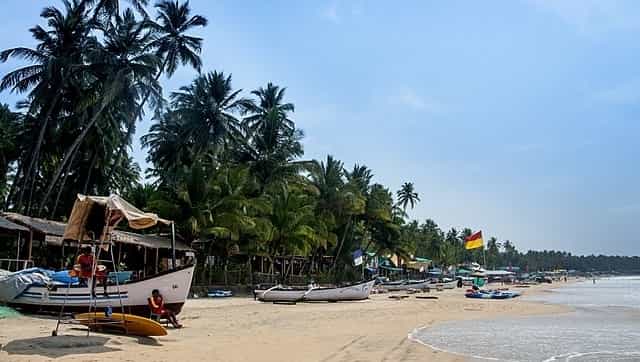)
A recent Netflix series, Gloria , is unusually for such shows, set in Portugal. It tells the story of a young spy operating in Cold War Portugal, negotiating the intrigues of the USA and Soviet Union. It is the late 1960s and Portugal is engaged in a protracted struggle to retain its African colonies. Young men are being sent as cannon fodder to keep the Portuguese colonial empire together even as most other Western powers had already relinquished theirs. A throwaway line in one of the episodes gives us an inkling of the reason. It was humiliating to lose Goa the way we did, declares one of the characters.
And that’s how the Portuguese felt about Goan liberation—close to 500 years in Portuguese hands and gone in a whiff!
When it came to the crunch, that is more or less how it happened.
The beginnings of the Portuguese sojourn
Vasco da Gama’s arrival in Kozhikode (Calicut) in modern-day Kerala was the earliest Portuguese encounter with the subcontinent. This sparked off an engagement which eventually resulted in the Portuguese gaining hold of some territories. In 1505, the first viceroy, Francisco de Almeida, established his headquarters at what was then Cochim, the present-day Fort Cochin. After 1510, the Portuguese administrative centre was centred in present-day Goa and their Indian sojourn had formally begun.
Over the next three centuries, the Portuguese did make a play to acquire more Indian territory. Among the territories that they controlled was the region that later became Bombay (now Mumbai) which was ceded to the British in 1661 when Catherine of Braganza married Charles II.
Even so, by the early 1800s, their sphere of influence had been restricted to Goa and a few other territories on the western coast. Portuguese India consisted of the territory of Goa, Damão or Daman, which included Dadra and Nagar Haveli, north of Bombay (now Mumbai) and lying between the Indian states of Maharashtra and Gujarat and Diu with Pani Kota Island on the southern coast of the Kathiawar Peninsula in Gujarat. The total area under Portuguese control was 4,193 sq kms with Goa accounting for the bulk of Portuguese India both in terms of territory as well as population.
The Goan anti-colonial struggle
Over the long course of Portuguese rule, there had been several attempts to overthrow the Portuguese. Among the more interesting ones was what came to be known as the Pinto Revolt. In 1787, three priests, all of them from the Pinto clan, attempted to foment dissent in Goa and invite Tipu Sultan to take over the territory. The plot was discovered and foiled. Other such revolts too took place, none of them successful.
By the 20th century, many Goans were increasingly voicing their opposition to Portuguese rule and the discriminatory treatment they received. In 1900, Luís de Menezes Bragança and Messias Gomes founded O Heraldo , the first Portuguese language newspaper in Goa, which was critical of Portuguese colonial rule. In 1928, Tristão de Bragança Cunha founded the Goa National Congress to fight for the Goan cause.
Portuguese reaction to such efforts by the Goans to assert themselves was quick and brutal. A series of laws restricting political campaigning and imposing press censorship were passed. However, inspite of strict Portuguese vigilance, the struggle continued and in 1946, Ram Manohar Lohia and Juliao Menezes hosted a pro-independence gathering in Panaji resulting in Lohia’s arrest and his being booted out of the territory.
With independence coming to the rest of India in 1947, Goa too expected to be freed of its colonial shackles. That however was not to come so easily.
1947 and thereafter
While the British left soon after Indian Independence in 1947, it was not so easy with the French and Portuguese and their colonial possessions. The Nehru government opened negotiations with them to formally relinquish control of their territories.
In 1948, France and India negotiated a referendum on France’s Indian possessions to choose their political future. Accordingly, Chandernagore was ceded to India on 2 May 1950 and later integrated with West Bengal. On 1 November 1954, the four enclaves of Pondicherry, Yanam, Mahe and Karaikal were also transferred to India and became the Union Territory of Pondicherry.
Portugal however proved more intractable. It insisted that its Indian possessions were part of ‘Metropolitan Portugal’ and there was no question, therefore, of ceding control of them.
Was the Portuguese claim credible at all? Decidedly not. That the laws restricting political activity and free expression continued even beyond 1947 belied the Portuguese claim that their Indian possessions were not ‘colonies’, but part of mainland Portugal. But with Portugal unwilling to negotiate and stonewalling all attempts by India to broach this issue, things were at a dead end.
In 1954, events in Dadra and Nagar Haveli overtook what the governments of India and Portugal were doing (in the Portuguese case, not doing is perhaps more appropriate) at that time.
On the night of 22 July 1954, 15 volunteers of the United Front of Goans under the leadership of Francis Mascarenhas and Waman Desai sneaked into the territory of Dadra and reached the police station which was held by only three policemen, who were easily overpowered. The Indian tricolour was hoisted and the Indian National Anthem was sung. Dadra was declared the ‘Free Territory of Dadra’.
On 2 August, the Azad Gomantak Dal reached Silvassa in Nagar Haveli to find that its Portuguese administrators had fled. From 1954 to 1961, Dadra and Nagar Haveli existed as a de facto state known as ‘Free Dadra and Nagar Haveli’. It was administered by a body called the Varishta Panchayat of Free Dadra and Nagar Haveli, with administrative help from the government of India. Portugal meanwhile began proceedings in the International Court of Justice to get these possessions back which did not make any headway.
Meanwhile, in 1955, a satyagraha was launched by the communist and socialist parties for the freedom of Goa. When the satyagrahis entered Goa, the Portuguese opened fire, killing 20 Indians. Nehru imposed an economic blockade and hoped that the popular movement in Goa and the pressure of world public opinion would force the hands of the Goan authorities. Internal revolts were, however, quelled brutally. India broke off diplomatic relations with Portugal and closed its Consulate-General in Panaji. Still, nothing moved for the next few years.
Finally, the Indian government was forced to consider the military option. A 36-hour military operation, codenamed ‘Operation Vijay’ was conducted on 18-19 December 1961 by the navy, air force and army. There was little resistance internally when the forces entered the territory. On 19 December, the Portuguese governor-general Manuel António Vassalo e Silva signed the certificate of surrender bringing Portuguese rule in the region to an end.
Major General Kunhiraman Palat Candeth was appointed military governor of Goa. In 1963, the Indian Parliament formally integrated the territories into the Indian Union. Goa, Daman and Diu became a Union Territory. Dadra and Nagar Haveli became a separate Union Territory.
Interestingly, in 1961, amidst Indian preparation for the invasion of Goa, KG Badlani, an IAS officer was, for one day, designated the Prime Minister of Dadra and Nagar Haveli, so that, as Head of State, he could sign an agreement with the Prime Minister of India, Jawaharlal Nehru, and formally merge Dadra and Nagar Haveli with India.
In October 1962, panchayat elections were held in Goa, followed by assembly elections in December 1962. On 16 January 1967, a referendum was held in which the people of Goa voted against merger with Maharashtra. Portugal finally recognised Goa’s accession into the Indian union in 1974. In 1987, Goa was separated from Daman and Diu and made a full-fledged state. Daman and Diu continued as a Union Territory.
Goa is today among India’s most picturesque states with its beaches and its vibe attracting millions of visitors. It is a permanent reminder of India’s Portuguese connection.
Read all the Latest News , Trending News , Cricket News , Bollywood News , India News and Entertainment News here. Follow us on Facebook , Twitter and Instagram .
Find us on YouTube

Related Stories
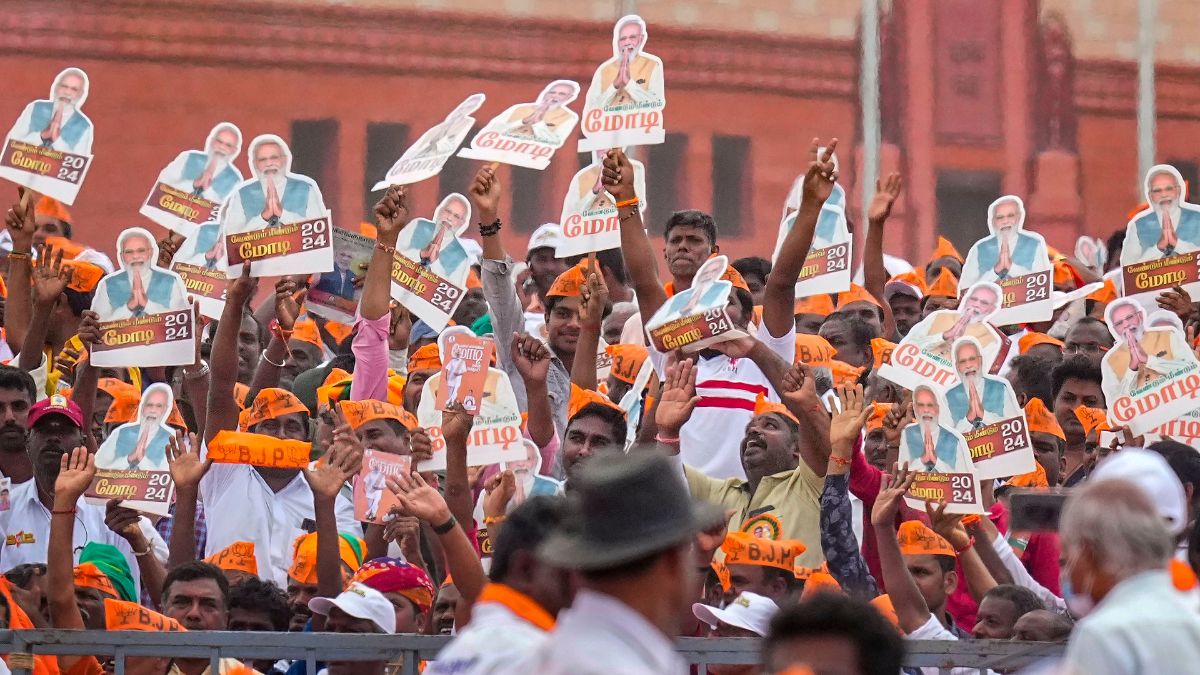)
1 for Bansuri, 3 for Modi, 5 for Shivraj: BJP’s first list for Lok Sabha 2024 in 25 numbers
)
Two reasons why Council of Ministers' meet chaired by PM Modi this Sunday will be special
)
Lok Sabha Elections 2024: Who lost out, who made it in BJP’s first list of 195
)
One in four tourists flying into Nepal in February was Indian
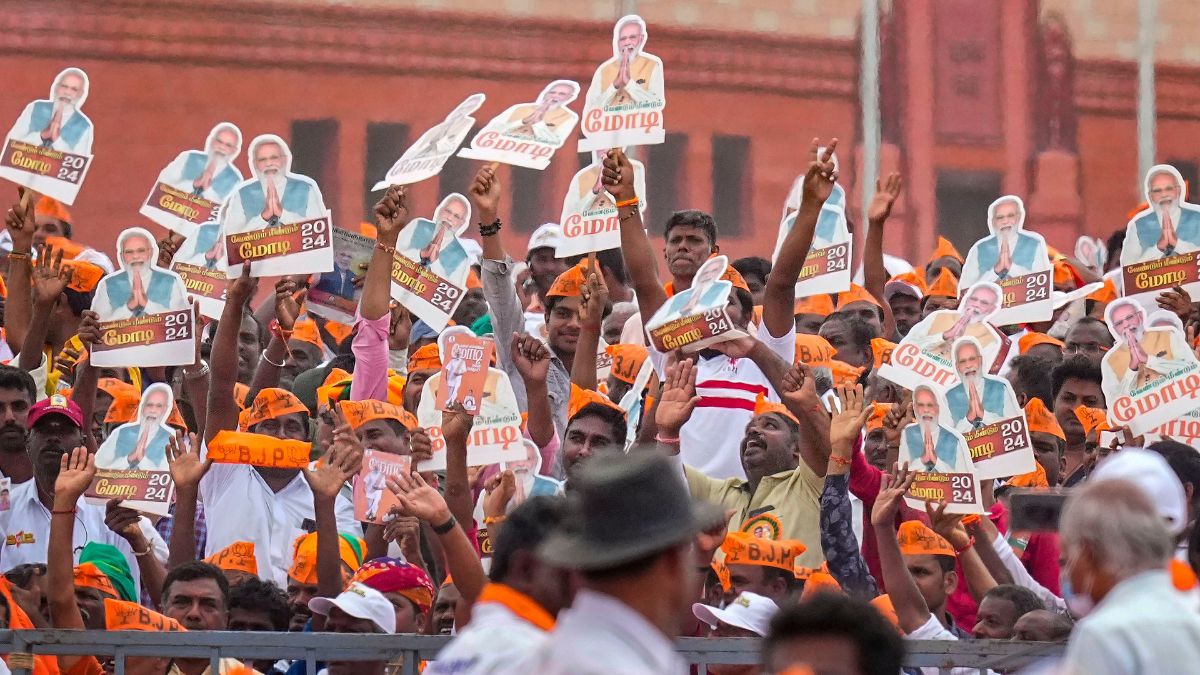)
- IAS Preparation
- UPSC Preparation Strategy
Liberation of Goa
The Liberation of Goa was a military action undertaken by the Government of India to liberate the territories of Diu, Daman and Goa from Portuguese rule on 17 -19 December 1961.
The “armed action” was code-named Operation Vijay by the Indian Armed Forces. It involved air, sea and land strikes for over 36 hours during which Goa was liberated from 450 years of Portuguese rule.
This article will elaborate on the Liberation of Goa within the context of the IAS Exam .

Background of the Liberation of Goa
The Portuguese enclaves in India were collectively known as Estado da India. Established in the 1400s they were the earliest colonial holding in India. It consisted of the districts of Goa, Daman and Diu and Dadra and Nagar Haveli. Upon India’s independence from the British Empire in August 1947, Portugal still continued to hold on to its enclaves.
Resistance to Portuguese had taken concrete shape in the early 20th century pioneered by Tristão de Bragança Cunha, a French-educated Goan engineer who founded the Goa Congress Committee in Portuguese India in 1928.
The Goa Congress was also made affiliate to the Indian National Congress (Formed on December 28, 1885 ) and Cunha was selected as its first President.
Post the 1940s the Portuguese crackdown on the independence movement in Goa became heavy-handed with mass-arrests and police firings. There were many mass demonstration and non-violent protests during the period. Apart from the non-violent protests, armed groups such as the Azad Gomantak Dal and the United Front of Goans carried out violent attacks aimed at weakening Portuguese rule.
The government of India gave full logistic and financial support towards these movements
Diplomatic negotiations were initiated by the government of India to hand over the enclaves by peaceful means on 27 February 1950. But the Portuguese Prime Minister, António de Oliveira Salazar, asserted that Goa and the other enclaves were not colonies but part of metropolitan Portugal, hence making their transfer non-negotiable. A further argument from Salazar was that the republic of India did not exist at the time when Goa came under Portuguese rule. Subsequent negotiations failed and India withdrew its diplomatic mission from Lisbon on June 11 1953.
The tension between Lisbon and New Delhi came to a head when on 15 August 1955, unarmed Indian activists trying to enter Goa were fired upon by Portuguese police resulting about 21-30 deaths and leading to outrage against continued Portuguese presence in the country. Following this incident, India shut its consul office in Goa on September 1955
Salazar appealed to the United Nations for a resolution of the conflict but it found considerable opposition from the Soviet Union . The US ambassador to India, John Kenneth Galbraith, requested the Indian government on several occasions to resolve the issue peacefully through mediation and consensus rather than armed conflict
It was the unprovoked Portuguese firing on a passenger Boat, Sabarmati, that finally convinced Prime Minister Jawahar Lal Nehru (Born on November 14, 1889 ) in initiating military action. The firing resulted in the death of a passenger and several injuries
Eventually, on 10 December, nine days prior to the armed action, code-named Operation Vijay, Nehru stated to the press: “Continuance of Goa under Portuguese rule is an impossibility”.
The Americans made it abundantly clear that should the matter be bought to the United Nations Security Council, no support from them would be forthcoming.
Liberation of Goa: UPSC Exam Notes – Download PDF Here
The Liberation of Goa Begins
Hostilities would begin on Goa on early hours of 17th December 1961. In a combined Land, Sea and Air operation, the Portuguese garrison at Goa was overwhelmed by the superior numbers of the Indian Army.
By the evening of 18 December, most of Goa had been overrun by advancing Indian forces. As per the directions from Lisbon, Goa was to be held at all cost until reinforcements could be dispatched from Portugal. If the situation became even more tenuous, then a scorched earth policy was to be enacted as a last-ditch resort to prevent Goa from falling into Indian forces.
Despite the orders from Prime Minister Salazar, Governor-General Manuel António Vassalo e Silva took stock of the numerical superiority of the Indian troops as well as the food and ammunition supplies available to his forces and took the decision to surrender. He knew no reinforcements would be coming as the Portuguese Navy had been blocked from crossing the Suez Canal by Egypt. The action by the Egyptians was in response to the Indian support given to Egypt during the Suez Crisis of 1956 .
Silva ordered all Portuguese armed personnel under his command to surrender to the Indian forces was. A ceremony was conducted on 19 December where the instrument of surrender was signed bringing to an end 451 years of Portuguese Rule in Goa. The war had lasted two days and resulted in the capture of 4,688 military personnel and cost 22 Indian and 30 Portuguese lives.

The aftermath of the Liberation of Goa
When they received news of the fall of Goa, the Portuguese government formally severed all diplomatic links with India and refused to recognise the incorporation of the seized territories into the Indian Republic.
Lisbon went virtually into mourning, and Christmas celebrations were extremely muted. Cinemas and theatres shut down as tens of thousands of Portuguese marched in a silent parade from Lisbon’s city hall to the cathedral, escorting the relics of St. Francis Xavier.
Following the end of Portuguese rule in 1961, Goa was placed under military administration headed by Kunhiraman Palat Candeth as Lieutenant Governor. On 8 June 1962, military rule was replaced by a civilian government when the Lieutenant Governor nominated an informal Consultative Council of 29 nominated members.
The move to liberate Goa was hailed by the Soviet Union and other members of the Non-Aligned Movement . It was inspired by anti-colonial movements in other Portuguese colonies such as Angola.
The United Nations and NATO were more negative as they considered the Indian action to be rash and unbecoming of a nation that had “preached non-violence to the world
Relations between India and Portugal thawed only in 1974, when, following an anti-colonial military coup d’état and the fall of the authoritarian rule in Lisbon, Goa was finally recognised as part of India, and steps were taken to re-establish diplomatic relations with India. On 31 December 1974, a treaty was signed between India and Portugal with the Portuguese recognising full sovereignty of India over Goa, Daman, Diu, Dadra and Nagar Haveli.
In 1992, Portuguese President Mário Soares became the first Portuguese head of state to visit Goa after its annexation by India, following Indian President Ramaswamy Venkataraman’s visit to Portugal in 1990.
Goa Liberation Day is observed on December 19 every year in India in recognition of the role played by its armed forces during its liberation.
Frequently Asked Questions about Liberation of Goa
How was goa liberated, what was the reaction both domestically and internationally towards the liberation of goa.
Aspirants can find the complete UPSC Syllabus through the linked article. More exam-related preparation materials will be found through the links given below
For more UPSC-related preparation articles and other articles based on Indian history, visit the links given in the table below:
Related Links
Leave a Comment Cancel reply
Your Mobile number and Email id will not be published. Required fields are marked *
Request OTP on Voice Call
Post My Comment
IAS 2024 - Your dream can come true!
Download the ultimate guide to upsc cse preparation.
- Share Share
Register with BYJU'S & Download Free PDFs
Register with byju's & watch live videos.
Call Us: +91-0832-2494204
Email:dir[hypen]tour[dot]goa[at]nic[dot]in
Tourism Helpline: 1364

Department of Tourism
Government of Goa

A Guide to the Flora and Fauna of Goa By P Killips Pp.70 (1998) Rs.195 or $9 A handy, glossy book cataloguing the exotic species of Goa’s fascinating wildlife. Every known bird, butterfly, animal, reptile, plant and flower photographed.
——————————————————————————– A Road Guide To Goa By P. Poovendran (Ed.) Pp.16 (1996) Rs.40 or $3 A road guide with a map.
——————————————————————————– A Treasure Trove of Goan Mango Dishes By Nilima M Kamat (2000) Pp 125 Rs.80 or $5 Whether you are a diehard fan of mangoes, or one who is yet to discover the delights of this delectable fruit, this book is for you! A treasure trove of divers Goan mango dishes, which enhance the flavours of this luscious fruit.
——————————————————————————– An Historical and Archaeological Sketch of the City of Goa By Jose Nicolau da Fonseca Pp. 350 (1994) HB Rs.595 or $25 A most comprehensive history of Goa in a format associated with gazetteers. Also carries important statistical information including charts about population, marriages, births and deaths in the year 1877 when it was first written. Reprint.
——————————————————————————– An Historical Sketch of Goa By Denis L. Cottineau de Kloguen Pp. 120 (1988) HB Rs.165 or $8 Rare book, reprinted. Originally published in the early 19th century.
——————————————————————————– An Illustrated Guide To Bombay And Goa By Myriam Kaye Pp.198 (1990) Rs.100 or $5 Kaye ventures beyond the sunny beaches to explore Goa’s natural grandeur, stately homes, ethnic cuisine and Latin fiestas. The merry tour also negotiates through Bombay’s high rises and into the teeming bazaars, forgotten villages and ancient temples.
——————————————————————————– Angela’s Goan Identity By Carmo D’Souza Pp. 148 (1994) Rs.35 or $3 A novel set in Goa. Deals with the “clash of cultures” and the Goan response to meeting with other people back home.
——————————————————————————– Aquaworld: The Environment and Ecosystems of Coastal Goa By Therese Almeida Pp.267 (1998) LF Rs.270 or $12 A Resource Book and Activity Guide for Teachers. Excellent for environment education classes in schools.
——————————————————————————– Areawide Environmental Quality Management (AEQM) Plan For The Mining Belt of Goa State By Tata Energy Research Institute Pp.300 (1998) HB Rs.1100 or $35 The first full length study of the impact of mining on the Goan environment, by a team headed by Ligia Noronha of TERI.
——————————————————————————– Baroque Goa By Jose Pereira Pp. 177 (1995) HB Rs.850 or $30 Photographs, illustrations and history of Baroque architecture and the various edificial types in Goa.
——————————————————————————– Bibliography of Goa and the Portuguese in India By Henry Scholberg Pp.414 (1982) HB Rs.500 or $21 Literature listed here covers the nearly five centuries of Portuguese rule in India including its meteoric rise, its sustained presence, and its sudden and final decline leading to its evacuation in 1961.
——————————————————————————– Cabinet Government In Goa: 1961-93 By Aureliano Fernandes Pp. 194 (1997) Rs.250 or $11 A new, chronological analysis of 30 years of government and politics in Goa in the post-Liberation period.
——————————————————————————– Classic India: Goa By Amrita Kumar (Ed.) Pp.57 (1997) HB Rs.95 or $5 A book on Goa generously illustrated with colour pictures.
——————————————————————————– Demographic Transition In Goa By V.A. Pai Panandiker & P.N. Chaudhuri Pp. 46 (1983) HB Rs.75 or $4 By 1971 Goa had already achieved a birth rate of 21 per thousand compared to the national average of 35 per thousand. What were the factors responsible for such low fertility? Any lessons?
——————————————————————————– Draft Report Of The Subcommittee On Offshore Banking In Goa By Planning Board of Goa Pp.25 (1997) Rs.25 or $2 A report related to one aspect of the proposed Free Port of Goa.
——————————————————————————– Economics of the Goa Jesuits By Charles J. Borges Pp.215 (1994) Rs.300 or $13 Seeks to trace the growth and collapse of the Jesuits during their stay in India.
——————————————————————————– Exploring Goa By Centre for Environmental Education (2001) / Pp 88 Rs.65 or $4 A Teachers’ Handbook of Environmental Education activities for trial and discussion. Developed in the course of interaction with teachers and environmental activists in Goa.
——————————————————————————– Ferry Crossing: Short Stories From Goa By Manohar Shetty (Ed.) Pp.268 (1998) Rs.250 or $11 An anthology of 27 Goan short stories from Konkani, Marathi, Portuguese and English penned by wellknown writers, mirroring Goa’s rich history and ethnic traditions.
——————————————————————————– Flora of Goa, Diu, Daman, Dadra & Nagar Haveli By Rolla Seshagiri Rao 2 Vols. Pp.545 Total (1985) Rs.250 or $11 An exploration-with a historical dimension-of plant life in the country region of Goa, Diu, Daman, etc. Includes maps, photographs and locations.”
——————————————————————————– Goa By John Oliver(Ed.) Pp. 80 (1997) Rs.325 or $14 Candid photographs of Goa’s grandeur in every mood, with text by Anil Dharkar
——————————————————————————– Goa By Sir J.M. Richards Pp. 144 (1995) Rs.95 or $5 Sir Richards studies the fascinating mix of traditions and images that together gives Goa its almost magical aura. The author celebrates people, culture, buildings, bazaars and beaches
——————————————————————————– Goa By Mario Cabral e Sa & Jean-Louis Nou Pp. 111 (1986) Rs.550 or $23 Goa’s top notch contemporary chronicler explores the past, maps the salient features and strips away the stereotypes created around Goa by superficial observers. Contains 60 lavish pictures
——————————————————————————– Goa By Asif Currimbhoy Pp. 112 (1993) HB Rs.150 or $7 A play on Goa that once played at Broadway.
——————————————————————————– Goa Acts and Rules: Vol 1: Goa Municipalities Act 1968 By Subodh S. Kantak(Compiled By) Pp.992 (1999) HB Rs.700 or $27 A very handy law reference for members of the Bar, Bench, Government and the general public featuring the Municipalities Act 1968, with all updated, connected material
——————————————————————————– Goa and her Khajans By Cosme Jose Costa Pp. 16 Rs.15 or $2 Khajans- a saga of constant reclamation of land from the sea to produce fertile rice fields- are Goa’s unique ancestral heritage with an unwritten history of hard labour of several centuries
——————————————————————————– Goa and Portugal- Their Cultural Links By Charles J. Borges & Helmut Feldmann (Ed.) Pp. 320 (1997) HB Rs.450 or $19 A collection of 21 papers on the theme: “Intercultural Relations: Portugal and Goa”. Covers aspects like 16th century life in Goa, contacts with Japan and Mozambique, and aspects of art, music and literature.
——————————————————————————– Goa And The Blue Mountains Or Six Months Of Sick Leave By Richard F. Burton Pp.368 (1991) HB Rs.365 or $16 A British officer of the 1850s who spends time in Goa, Malabar, Calicut and the Nilgiris, leaves behind his impressions.
——————————————————————————– Goa and the Revolt of 1787 By Joaquim Heliodoro da Cunha Rivara Pp. 292 (1996) HB Rs.400 or $17 The eminent historian unshrouds the legends cloaking the conspiracy known as “The Revolt of the Pintos” and other incidents relating to Goan nationalism.
——————————————————————————– Goa Dourada: The Indo-Portuguese Bouquet By T.P. Issar Pp. 177 (1995) HB Rs.800 or $29 A visual delight. It celebrates the mingling of Indo-Portuguese cultures, manifested in architecture, artefacts, carpentry, ‘blue tiles’ and textiles of golden Goa.
——————————————————————————– Goa Into The Mainstream By R.N. Saksena Pp.147 (1974) HB Rs.20 or $2 Attempts to study the problems of emotional and national integration of Goans.
——————————————————————————– Goa Liberation Movement And Madhu Limaye By Champa Limaye (Ed.) Pp.170 (1996) HB Rs.350 or $15 The late Madhu Limaye was a noted writer and Parliamentarian. His thoughts, emotions and contribution to the Goan freedom movement from his diary.
——————————————————————————– Goa Police By Dr. N. Dilip Kumar Pp.280 (1999) Rs.395 or $17 In this first book of its kind, a serving police officer attempts to provide a historical account of the police systems prevailing in Goa, and how the military and civil police helped the Portuguese suppress the freedom movement.
——————————————————————————– Goa Remembered: Vignettes Of Fading Traditions By Angelo Pereira Pp. 100 (1995) HB Rs.300 or $13 A major book on Sangolda village, illustrated profusely. The things described here about life in a Goan village will make Goans yearn with nostalgia.
——————————————————————————– Goa To Me By Teotonio R. de Souza Pp. 176 (1994) HB Rs.250 or $11 The 10 essays-with an autobiographical introduction- are a search for self identity which the distinguished Goan historian sees as inseparable from the history of his land and people
——————————————————————————– Goa! The Rome of the Orient By V.C. Mowli & V.J. Narasimha Rao Pp. 120 (1997) Rs.80 or $4 A question and answer format makes easy reading for those who want general information on the ‘pearl of the East’.
——————————————————————————– Goa’s Struggle for Freedom By P.P. Shirodkar Pp. 347 (1988) HB Rs.175 or $8 The most comprehensive study of the fight of the Goans, their brethren in the country and the Indian govt. to knock Portuguese colonialism out of Goa.
——————————————————————————– Goa- Cradle of my Dreams By Nora Secco de Souza Pp.136 LF Rs.60 or $4 A collection of assorted articles.
——————————————————————————– Goa- Images and Impressions By Thomas Vaz Pp. 70 (LF) Rs.290 or $13 A quality coffee table book on Goa, filled with nostalgic and exquisite colour photographs of Goa today
——————————————————————————– Goa: An Economic Update By Prabhakar S. Angle Pp 150/ (2001) Rs.175 or $9 A follow-up to the book Goa: An Economic Review, this book looks at Goa from the perspective of socio-economic development.
——————————————————————————– Goa: Concepts and Misconcepts By Prabhakar S. Angle Pp.98 (1997) Rs.120 or $6 The author sets out “to correct the misconception” that Goa is a culture different from the rest of India
——————————————————————————– Goa: Paradise Lost By Alexyz Fernandes Pp. 160 (1999) Rs.50 or $3 The cartoonist brings together his entire collection of environmental cartoons
——————————————————————————– Goa: Personalities 1996- Who is Who in the Future By Gil Bastos Vieira Pp.140 (1996) HB Rs.100 or $5 English-Portuguese, bilingual book. A Brazilian journalist’s word-sketches of prominent Goans today.
——————————————————————————– Goa: The Rachol Legacy By Teresa Albuquerque Pp. 120 (1997) HB Rs.1260 or $39 Albuquerque delves into the splendid spiritual and cultural heritage, and unique sixteenth-century monastic baroque architecture of Rachol.
——————————————————————————– Goa: Your Travel Guide By MRM Publications Pp 74/ (1999) Rs.65 or $4 History, Sightseeing, culture, festivals, shopping, food and accommodation for tourists in Goa.
——————————————————————————– Goa:Images and Perceptions By Celsa Pinto Pp.147 (1996) HB Rs.250 or $11 A collection of 10 essays that shows Goa alive and throbbing in the 16th century. Discusses issues like: women’s inheritance rights, the cotton trade, etc.
——————————————————————————– Goan Cookbook By Joyce Fernandes Pp. 70 (1994) Rs.75 or $4 The book that placed Goan cooking on the world map.
——————————————————————————– Goan Dishes By Sudha Amonkar Pp.140 (1996) Fourth Reprint Rs.70 or $4
——————————————————————————– Goan Mango Dishes By Nilima M. Kamat Pp. 125 (1998) PB Rs.80 or $5 The author offers recipes of delectable pickles, chutneys, drinks and desserts.
——————————————————————————– Goan Society Through The Ages By B.S. Shastry (Ed.) Pp.286 (1993) HB Rs.300 or $13 23 papers on pre- and post-colonial Goa. Subjects range from Christian folk-songs to the status of women in Portuguese Goa, the tobacco trade, and other interesting insights into yesterday.
——————————————————————————– Goans of Kenya By Teresa Albuquerque Pp. 102 (1999) Rs.150 or $7 Albuquerque delves into the saga of a segment of Goans, driven by economic circumstances to venture into Africa at the turn of the century. Besides attaining eminence in public life, some of them played a significantly role in Kenya’s freedom struggle.
——————————————————————————– Gram-Panchayats in Goa: A Critical Study By Tanaji Halarnkar Pp.212 (1990) HB Rs.250 or $11 Dr Halarnkar’s book is the first scholastic study of village governance.
——————————————————————————– Guide To Goa By A.C. Khanna, K.K. Sawhney, S.R. Vashist (Ed.) Pp. 64 (1998) Rs.50 or $3 Everything you would like to know while vacationing in Goa. Includes a handy tourist map of the State.
——————————————————————————– Health and Hygiene In Colonial Goa: 1510-1961 By Fatima da Silva Gracias Pp.300(1994) HB Rs.450 or $19 Investigates the medical scenario during Portuguese rule. Da Silva Gracias discusses the roles of traditional Goan medicine vis-a-vis modern medicine and finds that the public health conditions during the period were quite abysmal.
——————————————————————————– Houses of Goa By Gerard da Cunha, Heta Pandit and Annabel Mascarenhas Pp.208 (1999) Rs.1900 or $51 This book is the result of an extensive study of over 150 Goan houses, with a foreword by an exponent of natural architecture, Gerard da Cunha. The book covers all elements of style found in Goa’s architecture, with 200 gorgeous, colour pictures by photographer Ashok Koshy
——————————————————————————– Kaleidoscope of Women In Goa By Fatima da Silva Gracias Pp.166 (1996) HB Rs.250 or $11 A fine historian provides a picture of the life-styles of women-both Christian and non-Christian-including their customs, traditions and rituals during colonial rule.
——————————————————————————– Law of Town and Country Planning in Goa By Shantaram Naik (Ed.) Pp.583 (1994) HB Rs.200 or $9 An attempt to bring out the entire law on the subject in one handy volume.
——————————————————————————– Legal Systems In Goa By Dr. Carmo D’Souza Vol. 2 Pp.305 (1995) Rs.150 or $7 Comprehensive study of the history of Goa’s legal system. Volume 2 deals with laws and legal trends.
——————————————————————————– Legends of Goa By Mario Cabral e Sa Pp. 119 (1998) Rs.395 or $17 Cabral e Sa shares with readers a treasure chest of historical legends of Goa, from the earliest times till the end of the colonial rule. Illustrated by Mario.
——————————————————————————– Major Crops of Goa By Olavio Fernandes & Ulhas Kakode (Ed.) Pp.132 (1997) Rs.40 or $3 Viable technologies on various aspects of Goa’s agricultural and horticultural crops like rice, groundnut, coconut palm, mango, cashew, jackfruit and others.
——————————————————————————– Of umbrellas, goddesses and dreams: Essays on Goan culture and society By Robert S. Newman Pp. 292/(2001) Rs.225 or $10 In a series of essays, written over a period of three decades, an American anthropologist looks at Goan culture and society from a variety of unconventional standpoints. Shamans, mystics, gangsterish politicians, goddesses, postage stamps and other unexpected things come together in this collection which celebrates Goa’s syncretic, harmonious religious traditions, wherein people of different faiths live together in complete amity.
——————————————————————————– Profile of Eminent Goans By J. Clement Vaz Pp.347 (1997) HB Rs.400 or $17 A painstaking survey of the glorious achievements of an array of great Goans, past and present, and their various contributions to human progress.
——————————————————————————– Saloni in Goa By Loveleen Kacker Pp.88 (1995) Rs.50 or $3 Short story for youngsters. Set against the backdrop of Goa, drug dons et al.
——————————————————————————– Society In Goa By S.R. Phal Pp.104 (1982) HB Rs.50 or $3 The author focuses on traditional social institutions like those of the comunidade and the mundkar, the life-style of the Kunbis, and life in modern Goa as well.
——————————————————————————– Statistical Pocket Book of Goa 1993-1997 By Statistics Department, Govt of Goa Pp.246 (1996) Small Size Rs.70 or $3 All the basic statistics on Goa you need, at a glance. Official version. Pocket size.
——————————————————————————– Tales From Golden Goa By Anita Pinto Pp.36 (1998) Rs.50 or $3 Lovely tales for children with typical, rustic characters and colourful illustrations. The narrative takes the reader from one Goan village to another.
——————————————————————————– The Best of Goan Cooking By Gilda Mendonsa Pp. 105 (1997) Rs.175 or $8 Mendonsa dishes out well-tried recipes of both Goan and Portuguese origin.
——————————————————————————– The Conspiracy of 1787 In Goa By Carmo de Noronha (Ed.) Pp.28 (1994) Rs.25 or $2 A pamphlet that contains a brief commentary on the first major indigenous conspiracy against Portuguese rule.
——————————————————————————– The Construction Of A Political Community: Integration And Identity In Goa By Arthur G. Rubinoff Pp.173 (1998) HB Rs.295 or $13 Details the hassles and the response of Goan ethnic and social groups to the process of integration with India after Liberation.
——————————————————————————– The Essential Goa Cookbook By Maria Teresa Menezes Pp 371/ (2001) Rs.295 or $13 A well-produced compilation of over two hundred Goan recipes. Showcases an entire range of Goan food, with special attention to fish, prawn, pork and chicken. Recipes include favourites like Bebinca, Chorico (the Goan sausage), Sorpotel, Vindaloo and many, many others.
——————————————————————————– The Goa Law Reference By Goa Foundation Pp. 226 (1997) HB Rs.350 or $15 A formidable arsenal of information for members of the bench and bar, researchers, litigants and members of the public, compiled by the Goa Foundation. Contains the full text of the Goa Law Commission Report plus all laws applicable in Goa, local and central.
——————————————————————————– The Rape of Goa By Patrick Ferdinand Pp. 72 (1988) Rs.100 or $5 A thought-provoking tragedy in five acts, bristling with cameos of cruelty, avarice and corruption in the wake of Portuguese invasion of Goa and the subsequent Inquisition.
——————————————————————————– The State of Goa’s Health By Vikram Patel et al. Pp 62/ (2001) Rs.60 or $4 A comprehensive report on health issues in Goa.
——————————————————————————– The Transforming of Goa By Norman Dantas(Ed.) Pp.212 (1999) Rs.175 or $8 Selected essays by eminent writers, who focus on Goa and the Goan identity between the tradition-bound Portuguese period and the present India-oriented, development-driven democratic times. The book provides a much needed counterpoint to the considerable mythification that Goans are subjected to.
——————————————————————————– Unwanted Guest: Goans v/s Du Pont By Claude Alvares (Ed.) Pp.190 (1991) Rs.75 or $5 A full report of the House Committee set up by the Goa Assembly to investigate the controversial Du Pont project which was unceremoniously kicked out of Goa.
——————————————————————————– Village Goa By Olivinho Gomes Pp. 432 (1996) HB Rs.550 or $23 Gomes has produced a scholarly, detailed sociological study of the village of Chandor in South Goa
——————————————————————————– Winds of Fire: The Music and Musicians of Goa By Mario Cabral e Sa Pp.373 (1997) Rs.595 or $25 Profiles some outstanding Goan musicians and vocalists both in the Indian and Western idioms.
- Art & Culture
- Offbeat Travel
- Volunteering
- Nostalgiphilia
- Culture Directory
- Collaborate
Culture of Goa – Exploring the Traditions, Art, Music, Festivals of the Miami of India
- Culture of Indian States
- Indian Culture
Table of contents
History of goa, architecture in goa, culture & traditions of goa, languages in goa, religion in goa, goan cuisine, traditional dress of goa, dance and music of goa, art and craft of goa, fairs and festivals of goa, occupation of goa, adventure in goa, nightlife in goa, tourism in goa.
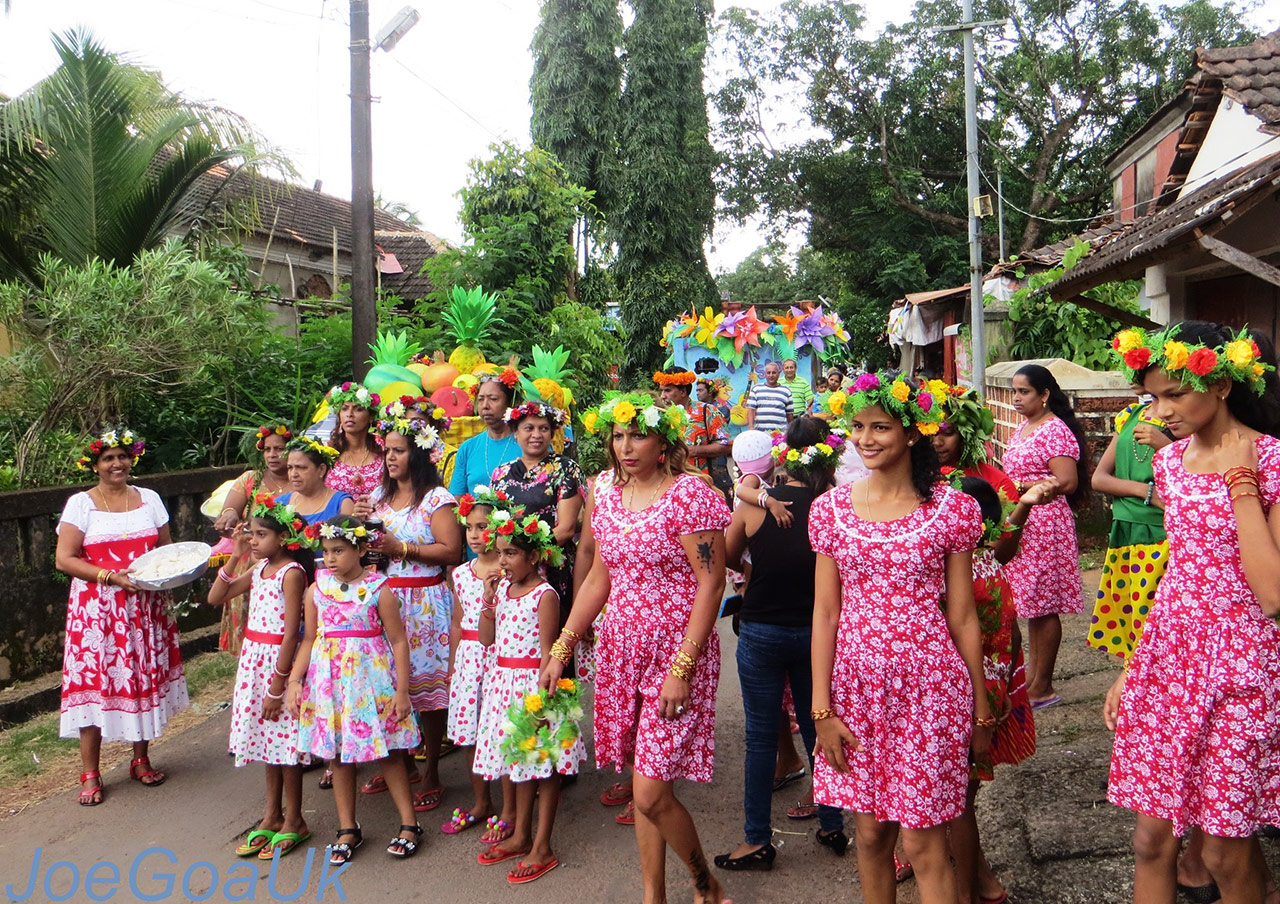
Located along the western coast of India, besides the Arabian Sea, Goa is a tourist destination suitable for all seasons. Panaji is the capital city while Vasco da Gama is the largest city of Goas.
Goa exhibits a distinct influence on Portuguese culture. The flourishing natural landscape, exciting lifestyle, and culinary specialities all serve the identity of Goa. Its heritage comprises an amalgamation of all the empires that ruled throughout its history.
Exquisite on its own, Goa is rightly called the “Rome of the East” and sometimes, “The Miami of India”.
Below, we delve into the culture of Goa and explore the traditions, and lifestyle of the state.
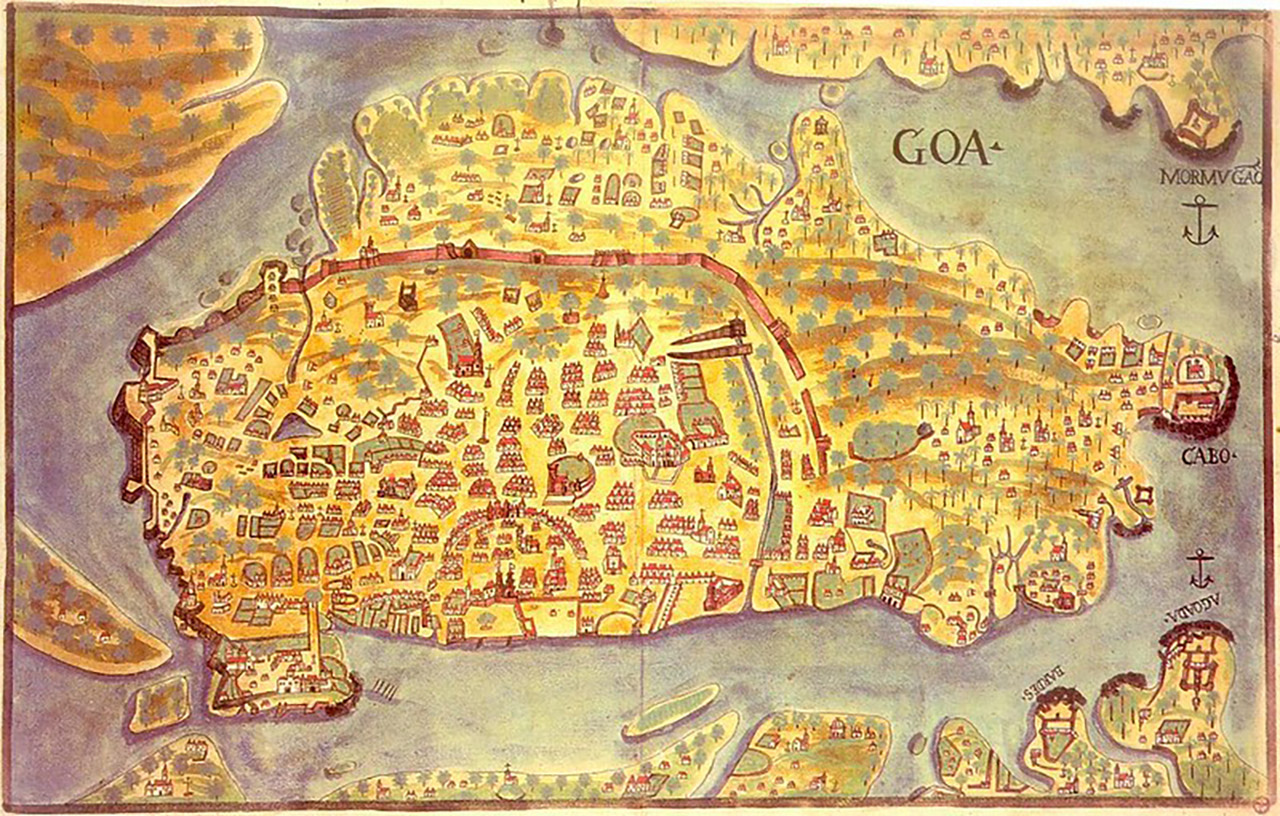
Located on the western coast, Goa is the smallest state of India. The history of this state traces back to 20000 to 30000 years ago. In its ancient times, it was known as ‘Rewti Dweep’. Several great rulers and their dynasties prevailed on this land, like the Sumerians, Mauryan King Ashoka, and the Delhi Sultanate. In 1510, the Portuguese established their colony in Goa, until 1961, when the Indian army regained the rightful province. Initially, Goa was declared as a Union Territory. In 1987, finally, it attained the position of the 25th state of India.
Suggested Read – The Lost Jewish Heritage of Goa
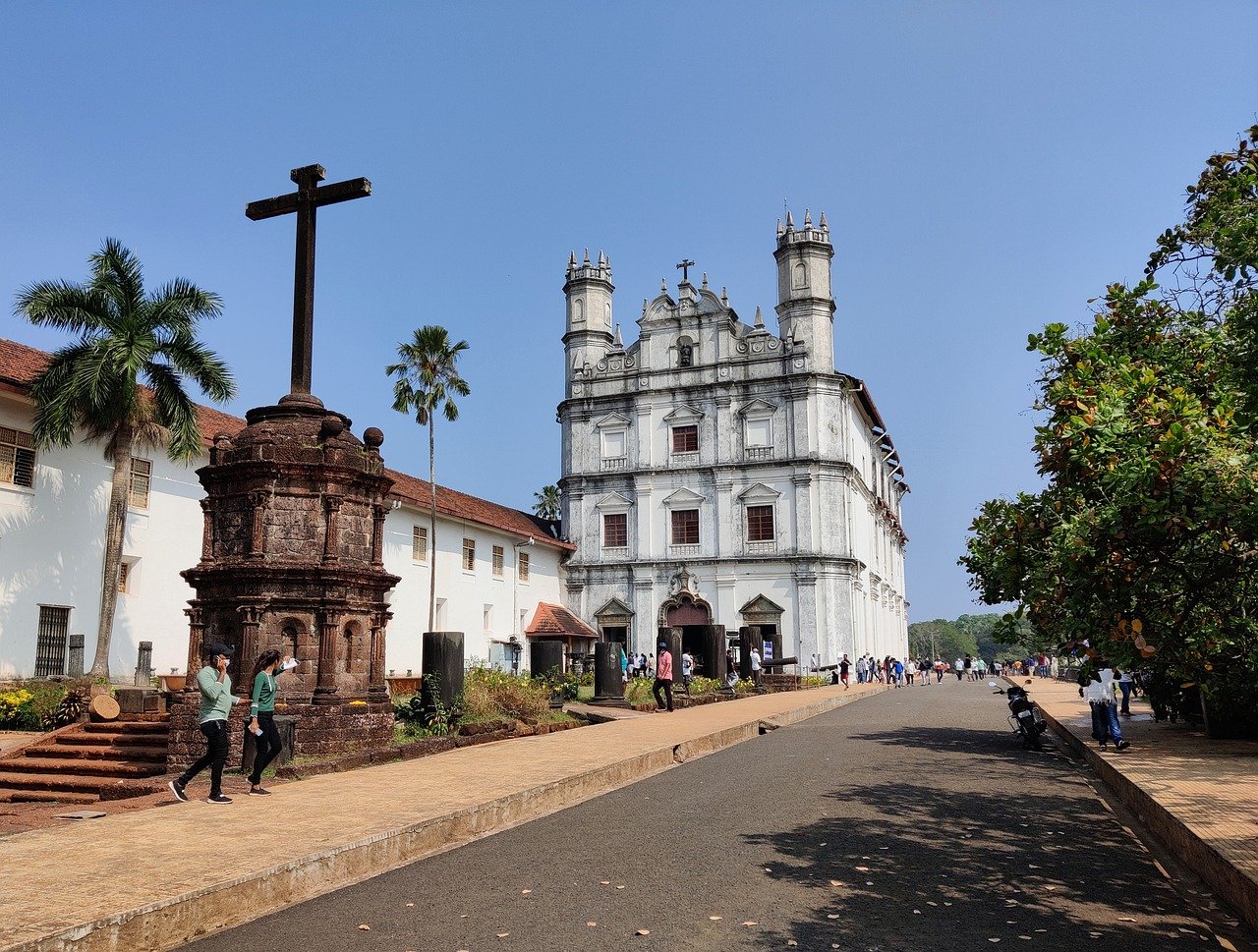
The buildings in Goa are reminiscent of the Portuguese who colonised the land in 1510, and the culture and aesthetics of Europe along with the native Goan architectural style is seen in its architecture. The gradually collapsing bungalow mansion, with its wood-iron balconies, shaded balcãos (spruced porches), oyster shell windows and central saquãos (inner courtyards), around which family life was historically revolving, is probably Goa’s most symbolic architectural type. Most of them were established around the beginning of the 18th century for their services to affluent Goan traders and officers. The buildings were built in a European style, but the components- red laterite stone, wood or terracotta and oyster shells in place of glass windows etc. were all locally sourced.
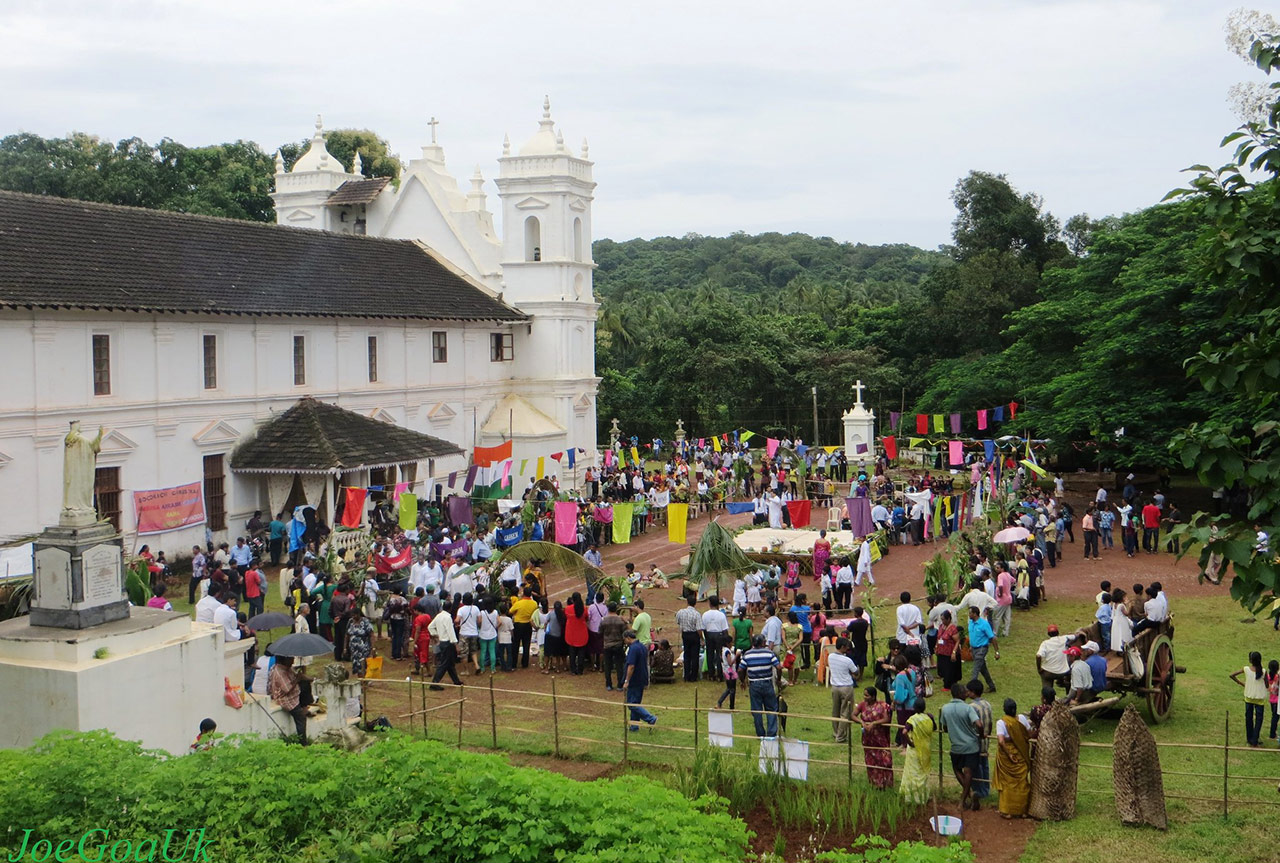
As an aftermath of colonial rule, the culture of Goa is a blend of Portuguese and Indian. The state is brimming with the vivacity of joyful spirits, and such is reflected in the people and their lifestyle. An easy preference for tourists to shed away the moulds of grinding metropolitan life, Goa is imbibed with the atmosphere of holiday and freedom.
Goans, a term beloved by the people of the state, practice ‘siesta’, wherein they shut down their shops and give in the afternoon rest, from 1 to 4 pm. The community is inclusive, and the friendly natives come together despite religious differences. Such is evident during celebration and worship. The colourful traditions of the state are portrayed in their folk performances, including music and dance.
Goa is home to people belonging to diverse ethnic communities, each of whom has its language. The most commonly spoken dialects are those of Konkani and Marathi. Other than these, people also speak Hindi, English, and Portuguese.
In Goa, religions play a significant component in everyday lives with three major ones being Hinduism, represented by around 60% of the people, Christianity (30%) as well as Islam (10%).
Prior to Goa being colonised by the Portuguese in the 16th century, Hinduism was the state’s main religion, but following the invasion, the Portuguese imposed Roman Catholicism on the citizens. When Goans again had the freedom to select their religion, Christianity had been extensively established throughout the State.
Goa has become a highly religiously tolerant state. The Hindus, the Christians and the Muslims live contentedly together. In fact, from Renaissance architecture in Goan temples to Christian prayers recited in Konkani, they have taken on many similar characteristics. You will certainly observe both religions dwelling happily next to one other while you traverse the state. Next to elaborate temples of Hindu origin and the mosques, Christian churches also tower tall.
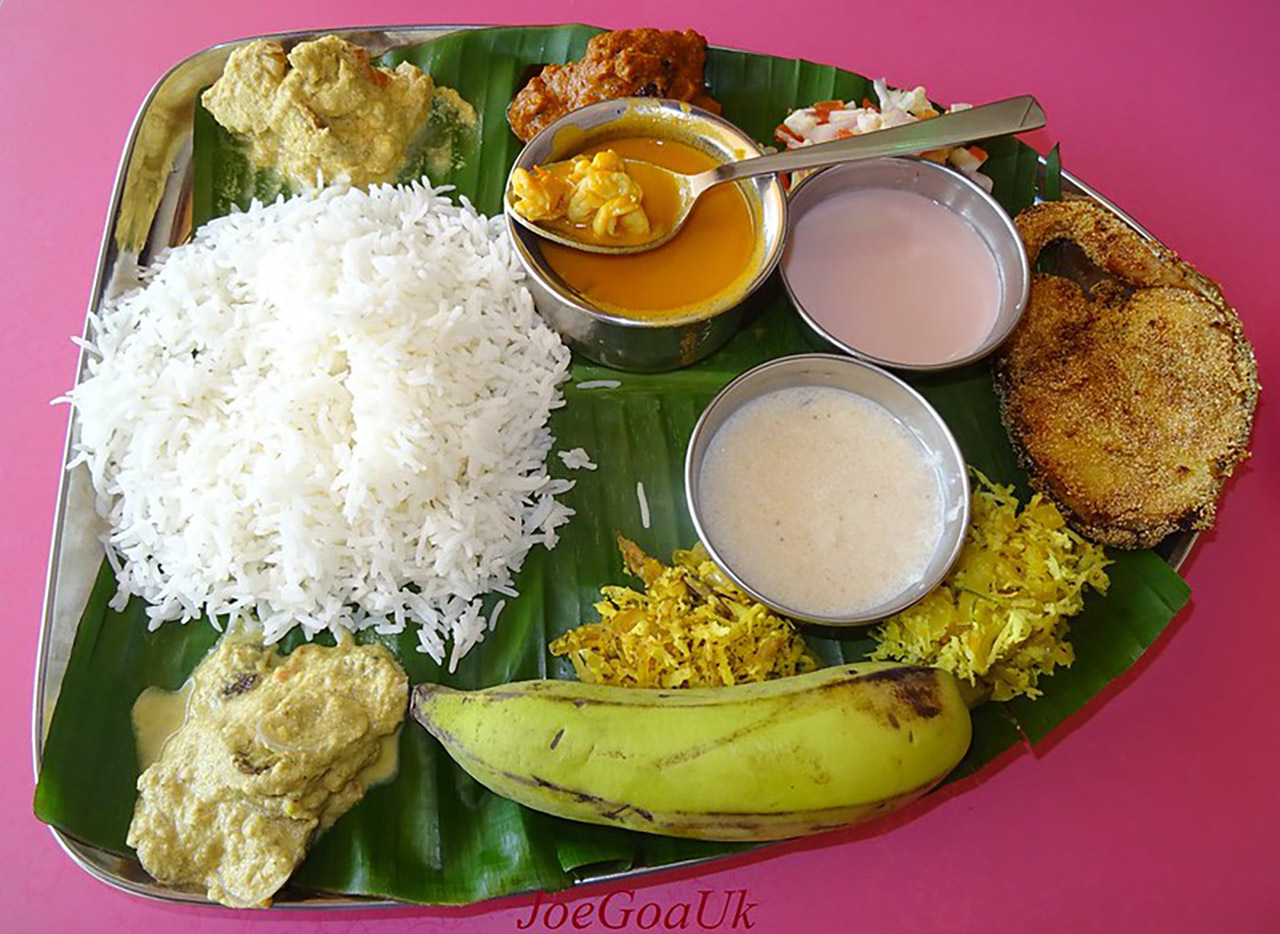
The cuisine of Goa comprises Portuguese, Hindu, and Islamic styles of cooking. This amalgamation results in a grand variety of rich, delicious dishes. Seafood is a common delight for the people, with its spread of deftly spiced and seasoned dishes.
Vinegar and coconut milk are used a lot in cooking. European spices are often included in Indian curry dishes. Rice and fish curry is a staple meal of the Goans.
Khatkhate is a vegetable stew that is prepared during festivals. It contains fresh coconut, spices of Goa, and at least five vegetables.
Other special dishes include pork preparations like xacuti, Vindaloo, Chorisa, and Sorpotel. Bebinca is a popular egg-based sweet dish that is famous during Christmas celebrations. Alcoholic beverages like the Cashew Feni and the Coconut Feni are popular among the Goans.
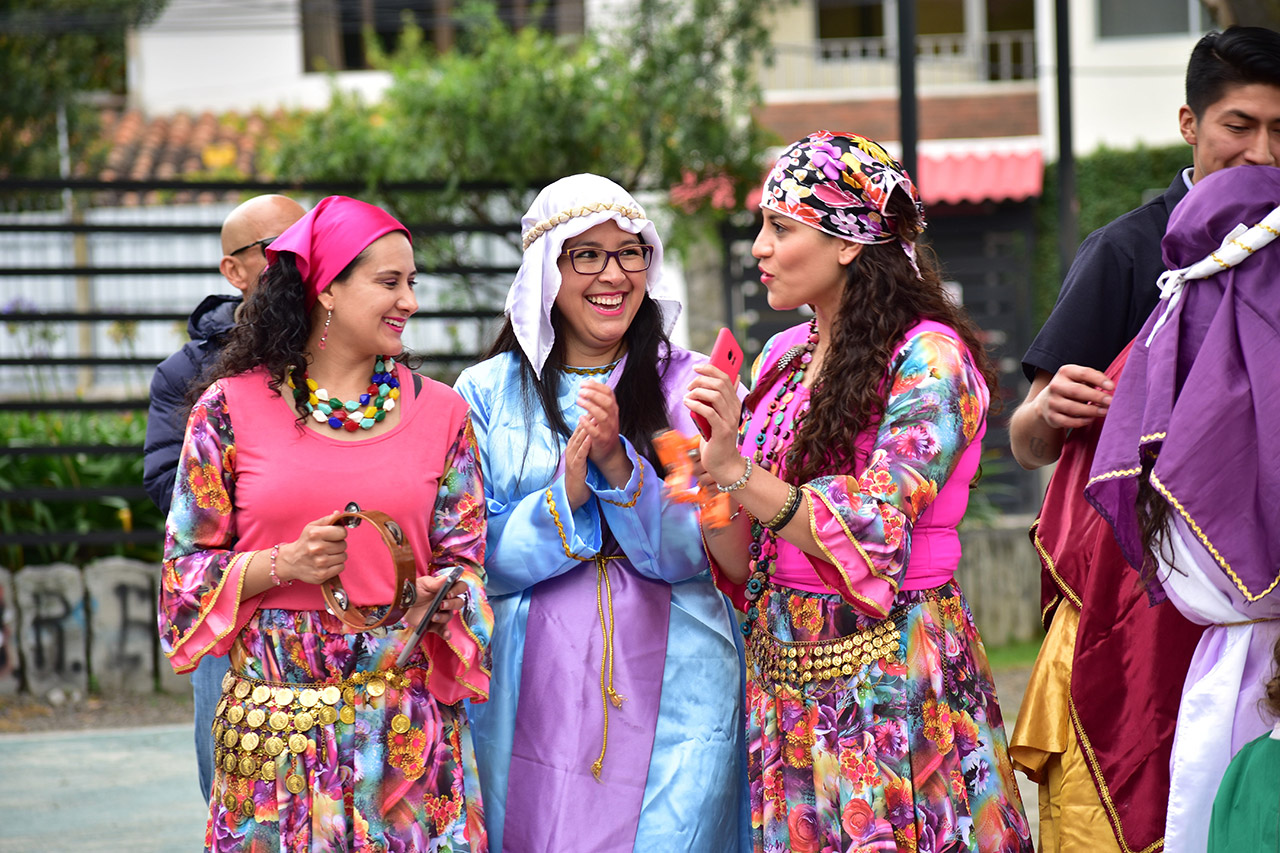
The tropical climate of the state makes light cotton clothes to be the most suitable. The Catholic women don dresses and gowns while the Hindus prefer sarees called ‘Nav-vari’. Some of the other significant costumes of the Goan culture include Pano Bhaju, Kashti, and Valkal. Men, on the other hand, usually wear shirts and trousers. Bright coloured shirts with half-pants and bamboo hats are representative of Goa among the tourists. The famous Goa Carnival exhibits the plethora of bright colours and costumes that are found in the state.
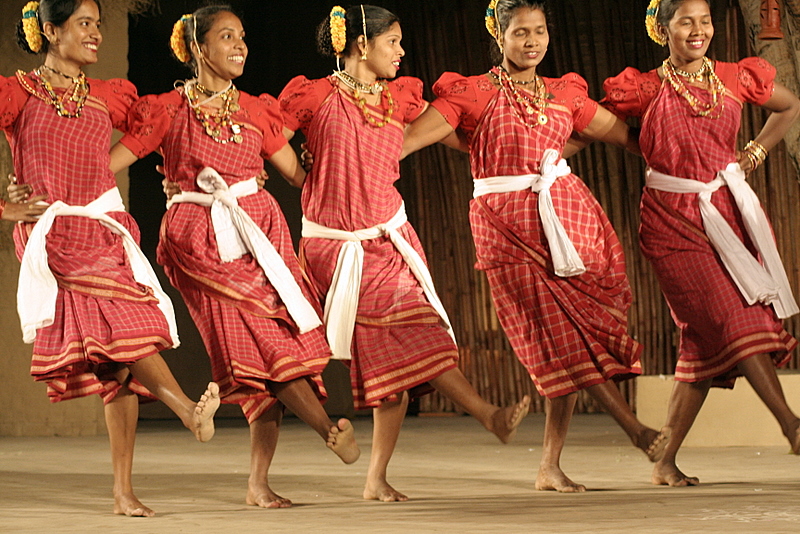
The cultural heritage of Goa abounds with folk music that blends harmoniously with influences of Western compositions. The Portuguese methods of incorporating violin, piano, and mandolin are utilized by Goan musicians. Dekhni, Mano, Fugdi, and Corridinho are some prestigious folk dances of Goa. Incredible singers as the likes of Emiliano D’cruz, Prince Jacob, Rosario Rodrigues, Souza Boy, M.Boyer, Tony King Alfred Rose, Kid Boxer, and J. B. Rod hail from Goa.
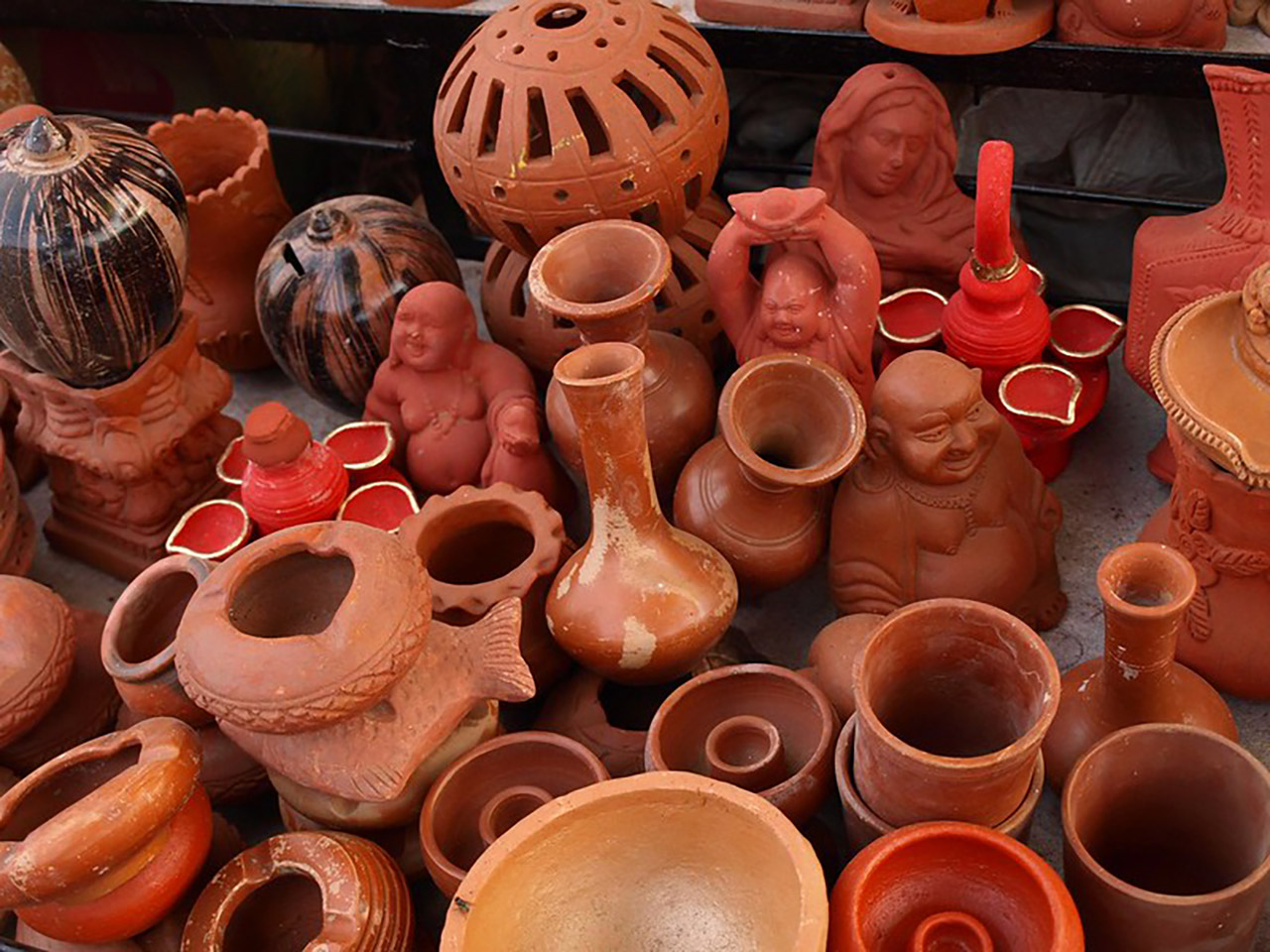
Goa thrives with an enriching culture of performing arts that exhibit an exemplare that is distinct to the state. Talented artisans hone their skills and produce attractive handicrafts made from organic materials, such as sea-shells, clay, paper, bamboo, and brass. These exquisite crafts are a favorite among tourists.
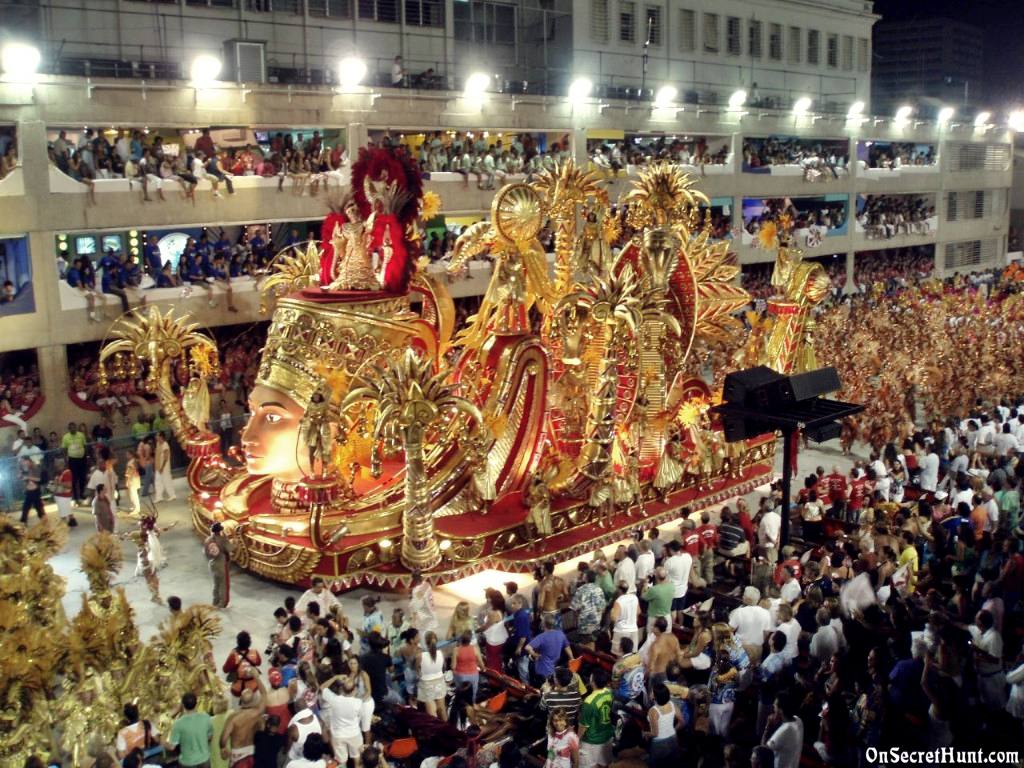
Festivals such as the Shigmo festival, Kalas Utsav, Shri Shanta Durga Jatra, Novidade, Bonderam Festival, and Goa Carnival showcase the spirit of Goan culture with effervescence. The Jatra feasts involve a grand procession of ‘palakhi’ or palanquins where innumerable people participate. The occasions of Christmas and New Year celebrations are great attractions for tourists.
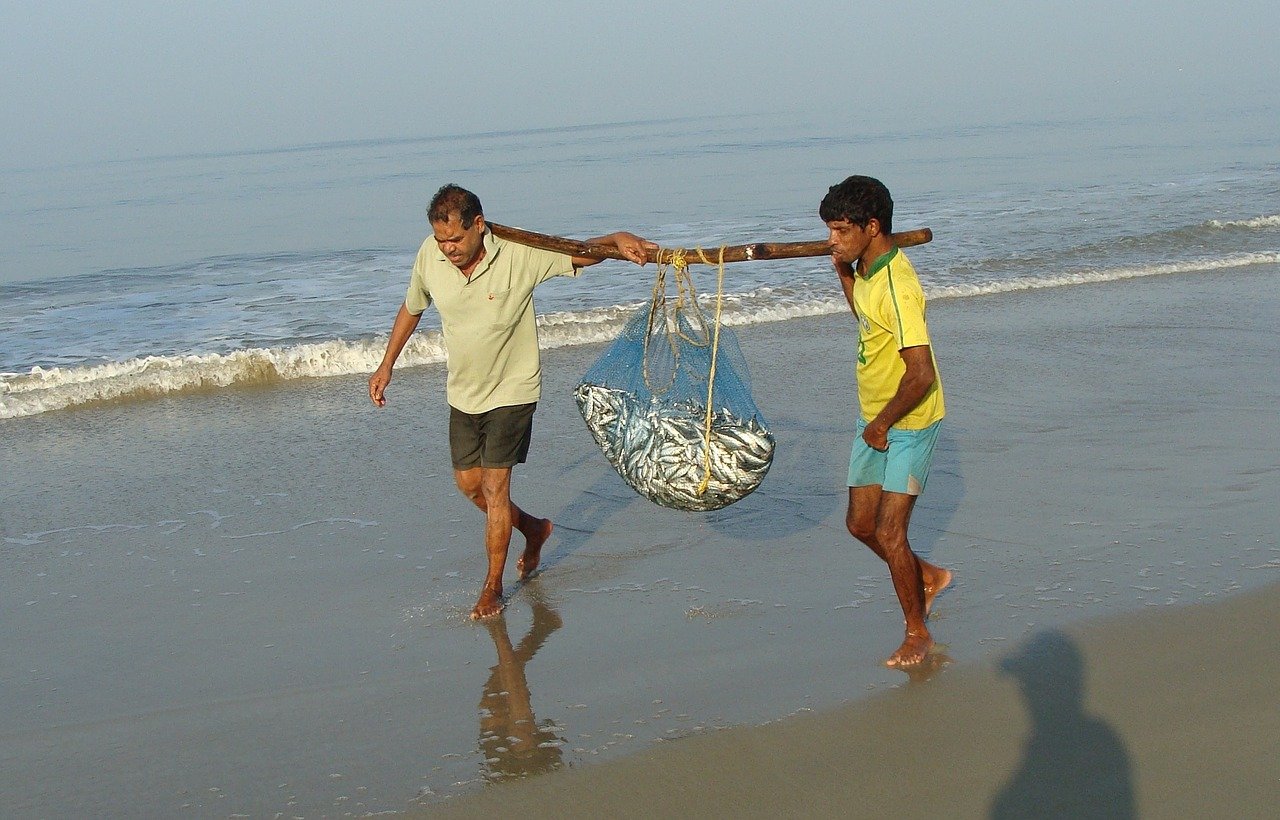
Most Goans are engaged in employment and organisations based on agriculture, fisheries and tourism. Paddy is the main crop. The local farmers work in lush green paddy fields in the monsoons throughout the day. Many farmers also cultivate cash crops such as coconut, cashews, mangoes, areca nuts pineapples, jackfruit and many more tropical crops. Many people in the summers brew the famed Feni tipple. Another important business in Goa is fishing. Fish are the lifeline of the state’s diet, having 66 km of shoreline, 11 inland rivers and 42 tributaries traversing the state.
Tourism has become one of the major players in the state’s economy. Many Goans, therefore, work in tourism-related industries such as guides for tourists, taxi drivers, self-owned tourism companies, and so on. Baking is another Goan custom that gives a job to many Goans. In every community there are traditional bakers from Goan, making of Pao, Polis and other Goan bread.
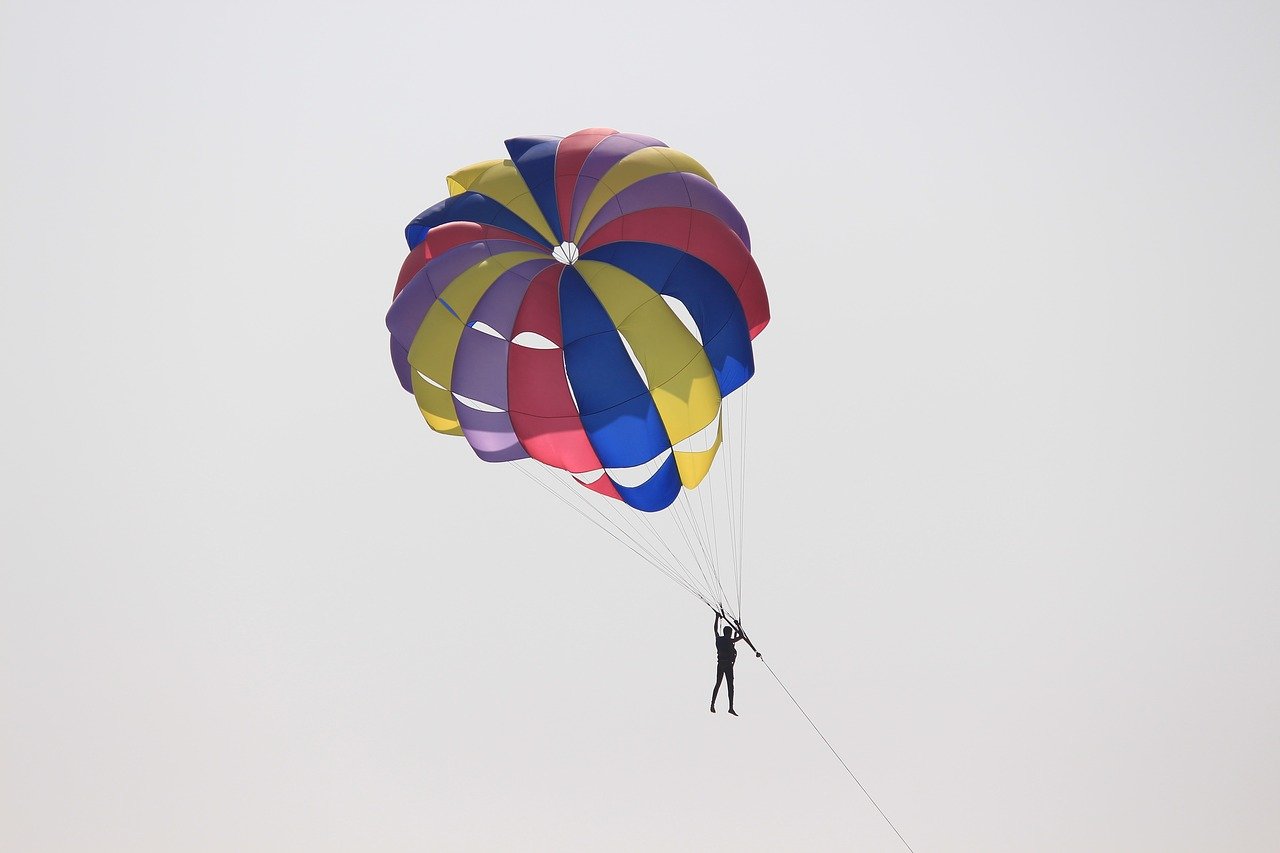
Two of the most popular sports that people of Goa love and participate in are football and bullfighting. Water sports like rafting, scuba diving, snorkeling, banana boat ride, kayaking, jet ski, speed boating, kite surfing, and Ringo ride are popular attractions of Goa. It is the only state in India where gambling is legal, and thus, conveniently boasts of a flourish of fine casinos.
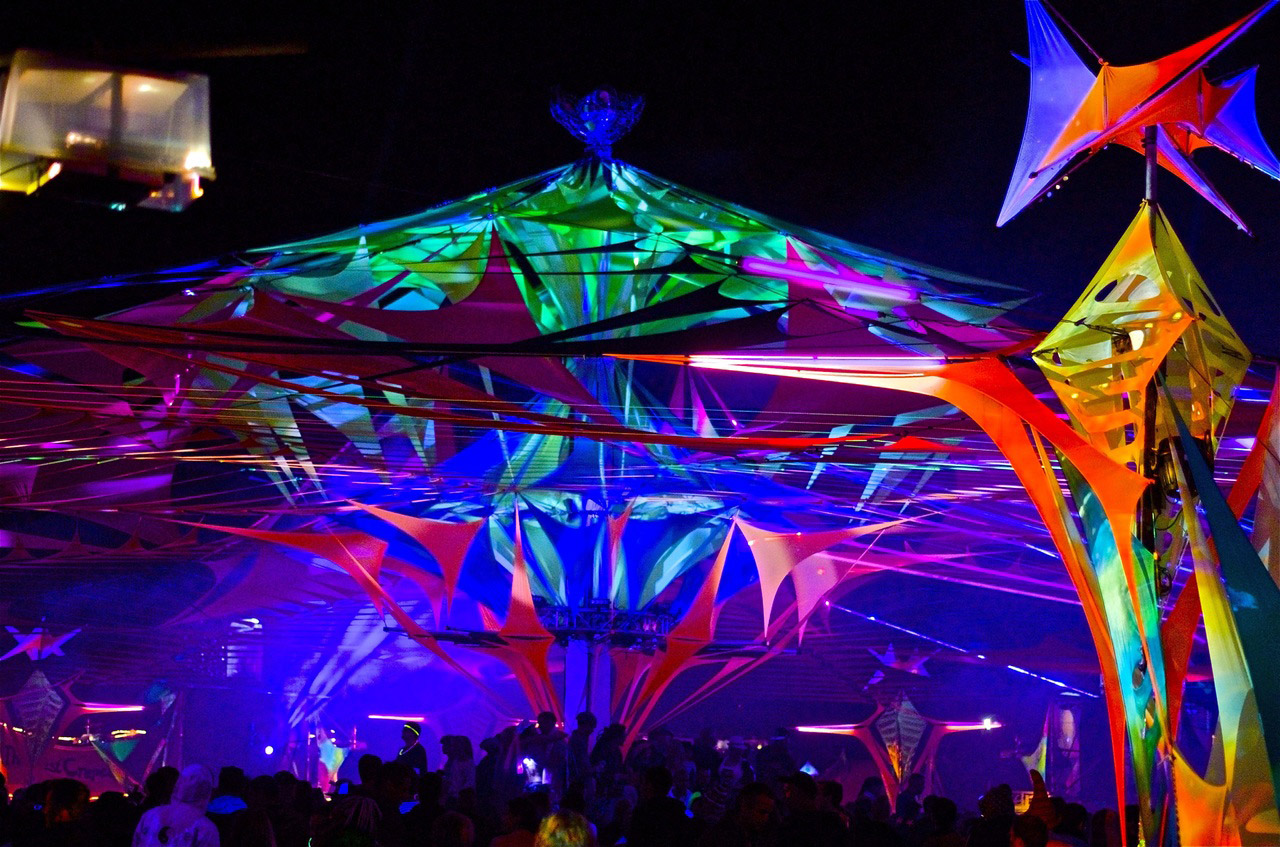
The nights of Goa come to life in the pulsating beats of a land that never sleeps. The parties and celebrations pose as bright and youthful destinations for people all over the country and even the world. Lights, music, and an environment of no-worries-of-the-world are sought after at such hours of the night.
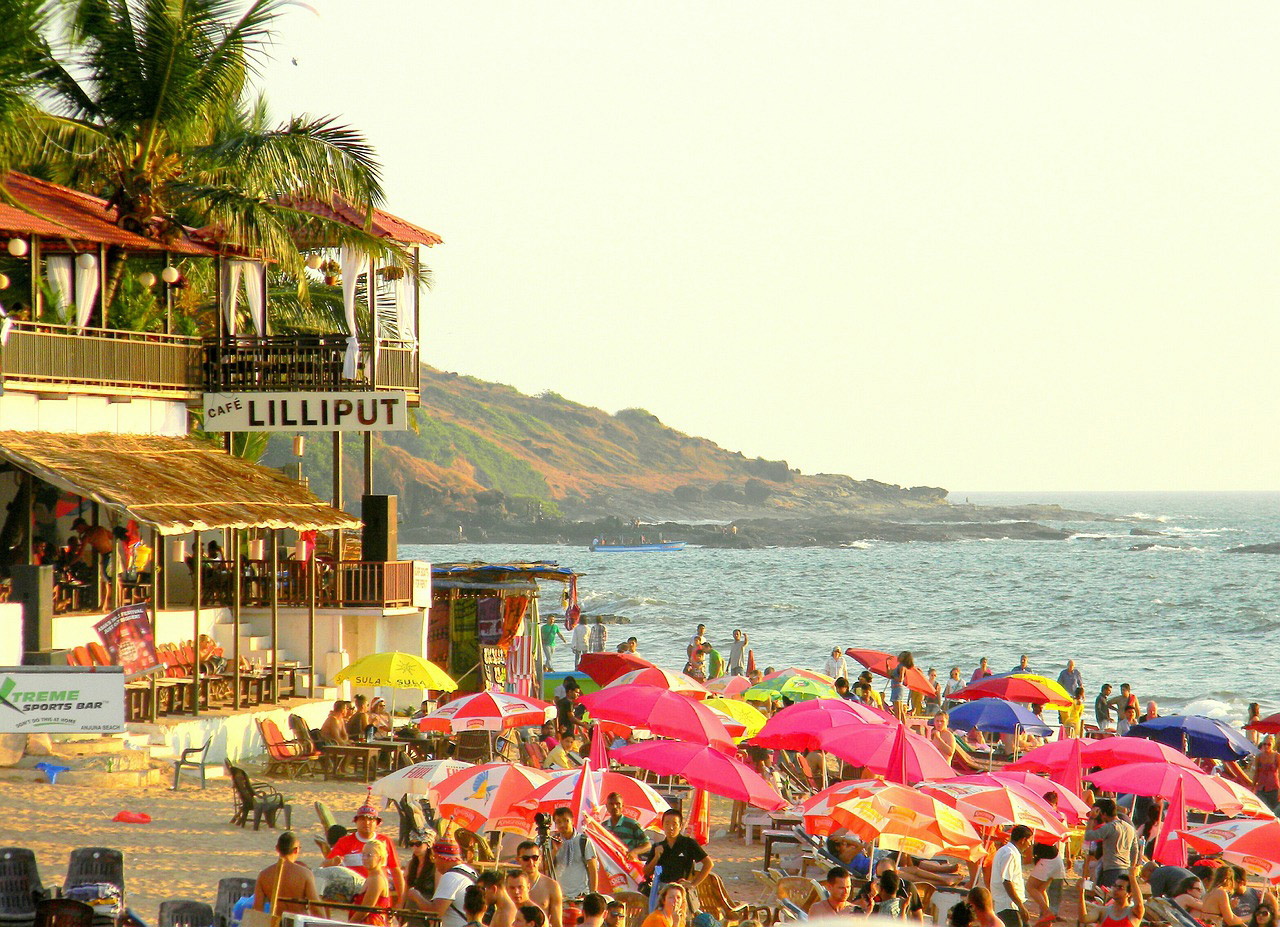
With its sweeping beachside, enriching folk music, and dance, and the heritage architecture of forts and churches. Goa is an extremely popular tourist attraction among Indians and foreigners alike. It’s perfect for relief from the demands of life and relaxing the spirit. Therefore, tourism in Goa is its primary industry that thrives all year long.
Goa has innumerable places of worship. The Basilica of Bom Jesus, St. Cathedral Church, and Our Lady of Immaculate Conception are some of the prominent churches. Mangueshi Temple of Lord Shiva, Shri Kamakshi temple, and the Mahalasa Temple are renowned among Hindu devotees. Safa Masjid at Ponda and the Jama Masjid are significant mosques.
Besides its religious structures, Goa’s architecture is also reflected in forts such as Reis Magos Fort, Mormugao Fort, Rachol Fort, and Naroa Fort.
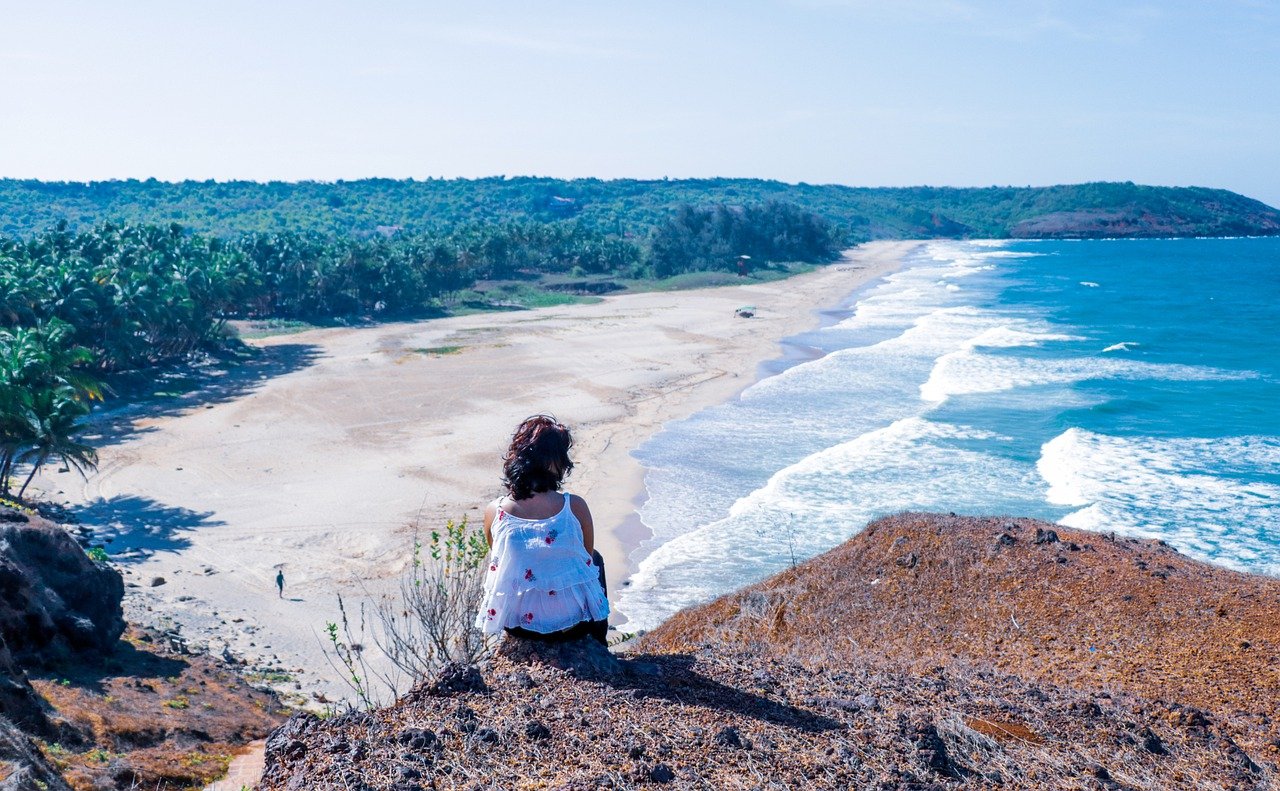
Among its attractive beaches, one must visit Candolim Beach. Bambolim beach, Baga Beach, Sinquerim Beach, Vagator Beach, Palolem Beach, Agonda Beach, and Arambol beach are equally good.
Other sites of natural wonders include the Mayem Lake, Dudhsagar Falls, Kesarval Springs, Arvalem Falls, and Kuskem Falls.
Goa also is home to various animals and birds, and its most famous wildlife sanctuaries include Bondla Forest, Bhagwan Mahavir Wildlife Sanctuary, Mollem National Park, and Cotigao Wildlife Sanctuary.
The state of Goa is defined by its vibrant colors and happening life. The people live in harmony and enjoy celebrations together. It’s an amazing place to forget all your worries and experience an excellent getaway.
Image credits: The copyright for the images used in this article belong to their respective owners. Best known credits are given under the image. For changing the image credit or to get the image removed from Caleidoscope, please contact us.
LEAVE A REPLY Cancel reply
Save my name, email, and website in this browser for the next time I comment.
INSPIRING READS
Odisha’s timeless tradition “danda jatra”, sita kund: the heartbeat of bihar’s cultural legacy, a food lover’s guide to the best restaurants in north goa, 11 most famous food of telangana you must try, exploring the vibrant folk dance of telangana: a cultural journey, traditional indian summer dishes to beat the heat and be healthy, trending topics.
- Terms of Use
- Privacy Policy
Affiliate disclosure: As an Amazon Associate, we may earn commissions from qualifying purchases from Amazon. Learn more
© caleidoscope - 2024.

Essay on My Favourite Place Goa
Students are often asked to write an essay on My Favourite Place Goa in their schools and colleges. And if you’re also looking for the same, we have created 100-word, 250-word, and 500-word essays on the topic.
Let’s take a look…
100 Words Essay on My Favourite Place Goa
Introduction.
Goa, a small yet vibrant state in India, is my favourite place. It is renowned for its beautiful beaches, historical monuments and lively markets.
Goa’s beaches are its heart. The serene environment of beaches like Calangute and Baga is a treat to the eyes.
Historical Monuments
The state is rich in history. The Basilica of Bom Jesus, a UNESCO World Heritage Site, is a must-visit.
Goa’s markets are full of life. The Mapusa Market is a favourite, with its variety of local goods.
In conclusion, Goa’s beauty and culture make it my favourite place.
250 Words Essay on My Favourite Place Goa
Goa, a tiny emerald land on the west coast of India, is my favourite place. It’s a blend of Indian and Portuguese cultures, sweetened with sun, sea, sand, seafood, spirituality, and serenity.
The Enchanting Beauty
Goa’s beauty is more than skin deep. It’s a visual treat with its azure waters, verdant fields, and white-washed churches. The picturesque landscapes and the architectural marvels of its colonial past take you on a journey of tranquillity and nostalgia. The Dudhsagar Waterfalls, the Salim Ali Bird Sanctuary, and the Basilica of Bom Jesus are a testament to Goa’s diverse natural and cultural heritage.
The Vibrant Life
Life in Goa is a vibrant carnival. The local markets like the Mapusa Market and Anjuna Flea Market, pulsate with life, offering a kaleidoscope of products from spices to handicrafts. The nightlife is equally exhilarating, with beach parties, night markets, and live music venues.
The Gastronomic Delights
Goan cuisine is an irresistible blend of flavours. The staple food of Goa, fish curry rice, is a delight to the palate. The vindaloo, xacuti, and bebinca are other must-try dishes that offer a unique fusion of Indian and Portuguese culinary styles.
Goa, with its laid-back lifestyle, rich cultural heritage, and stunning landscapes, is a paradise for travellers. Its eclectic mix of tranquillity and vibrancy, tradition and modernity, nature and culture, makes it my favourite place. The memories of Goa linger in my mind, like a beautiful melody that never fades.
500 Words Essay on My Favourite Place Goa
Goa, the smallest state in India, is a symphony of cultures, cuisines, and natural beauty. It is not just a location, but a feeling that embodies joy, leisure, and vibrant festivities. The state is a picturesque blend of Indian and Portuguese cultures, evident in its architectural styles, food, and lifestyle.
Goa’s Mesmerizing Beaches
The essence of Goa lies in its stunning coastline stretching over 100 kilometers. The beaches, each with its unique charm, are a perfect retreat from the hustle-bustle of city life. Calangute and Baga beaches are the most vibrant, offering thrilling water sports, bustling flea markets, and a lively nightlife. In contrast, beaches like Agonda and Palolem provide tranquillity, allowing one to connect with nature in a serene setting. The golden sand, the rhythmic music of waves, and the mesmerizing sunsets make Goa’s beaches my favorite place to unwind.
Architectural Splendour
Goa’s architectural heritage is a confluence of Indian and Portuguese styles. The Basilica of Bom Jesus, a UNESCO World Heritage Site, and the Sé Cathedral are testimonies to the grandeur of the bygone era. The white-washed churches with their intricate carvings and the colorful Portuguese houses with overhanging balconies and red-tiled roofs create a delightful visual spectacle. These architectural marvels are not just buildings but narrate the rich historical and cultural saga of Goa.
Goan Cuisine: A Gastronomic Delight
The Goan cuisine, a blend of Konkani, Portuguese, and other South Indian cuisines, offers a gastronomic adventure. The seafood dishes, especially the Goan Fish Curry, Prawn Balchão, and Bebinca, are a must-try for any food lover. The local drink, Feni, made from cashew or coconut, adds to the unique culinary experience. The Goan food, with its unique flavors and aroma, is one of the reasons why Goa is my favorite place.
Goa’s Vibrant Festivals
Goa’s cultural vibrancy is best experienced during its festivals. The Goa Carnival, a Portuguese tradition, is a riot of colors, music, and dance. The Shigmo festival, a spring celebration, showcases the state’s rich folk traditions. The Sao Joao Festival, celebrated at the onset of monsoon, is marked by boat races, processions, and merrymaking. These festivals, with their infectious energy and joyous celebrations, add to the charm of Goa.
Goa, with its beautiful beaches, architectural marvels, delicious cuisine, and vibrant festivals, is more than just a tourist destination. It is a place that captivates the senses, relaxes the mind, and uplifts the spirit. The state’s unique blend of Indian and Portuguese cultures, its laid-back lifestyle, and its natural beauty make it my favorite place. Whether one seeks adventure, tranquillity, or a cultural experience, Goa offers it all. It is a place that has left an indelible mark on my heart and continues to beckon me with its charm and warmth.
That’s it! I hope the essay helped you.
If you’re looking for more, here are essays on other interesting topics:
- Essay on Goa
- Essay on Globe
- Essay on Giraffe
Apart from these, you can look at all the essays by clicking here .
Happy studying!
Leave a Reply Cancel reply
Your email address will not be published. Required fields are marked *
Save my name, email, and website in this browser for the next time I comment.

- Skip to main content
- Skip to secondary menu
- Skip to primary sidebar
- Skip to footer
Study Today
Largest Compilation of Structured Essays and Exams
Essay on Goa | My Favourite Place | Short Information
December 14, 2017 by Study Mentor Leave a Comment
Summer holidays are exciting because we get to travel to new places and visit new places of interest. Since summer is at the peak during the summer months, we prefer to visit a cool place every year. Some of the places we have visited in the summer months till now include Darjeeling, Nainital, Ooty, Waynad, Kodaikanal, Matheran etc. All these places can be grouped under hill stations which seem to be relatively cooler compared to hot, dry regions.
This time, since my children were bored of visiting hill stations all this while, we thought they needed a change. So we prepared a list of places that could be visited. One such distinct place though was not ideal for the summers, was Goa.
We had never thought of visiting the place till my daughter came up with the idea of having fun in the beaches. It was a much needed relaxation time required for the whole family.
Goa, the land of beaches where young and old, mix very well, forgetting their age barriers and have fun in the sea. We packed our bags well in advance and left for the beautiful destination – Goa.
Table of Contents
History of the Place
Goa is a place that has much more to offer than what we expect. Goa has a long and vibrant history to boast of. The land is famous for its Portuguese reins as the Portuguese ruled the state for many years. It is believed that the Portuguese ruled this state for almost 450 years.
Their cultural traces could be found even to this day in the land of beaches. But the land was also conquered by Hindu rulers from many dynasties such as the Mauryan dynasty, the Chalukyas and also the likes of Kadambas.
The sea way made it a convenient route and passage for importing horses to the glorious Vijayanagar Empire of Hampi. Shipmen could be seen along the coast lines, waiting for ships to arrive so that they could off-load these horses from the ships and take them to the land of Hampi in Karnataka.
It was only towards the end of 15 th century that Vasco Da Gama, a Portuguese discovered a route to India through Goa and his entry into India marked a big epic history of the Portuguese invaders, then the British into India.
It was a big legacy that they acquired after Vasco DA Gama made entry into the lands of Goa and made it the route to export spices to his country. The sea route became very popular among the Portuguese who came here and settled down. They did not stop at their commercial expansions.
They even went a step ahead and spread their religion from their lands. They began to preach and spread Christianity in Goa. They started speaking in Portuguese; as many as 400 churches can be found in Goa alone.
Portuguese cultures started spreading on the lands of Goa and people slowly drifted away from their native cultures and began accepting Portuguese culture as part of their lives. It was only in December 1961 that Jawaharlal Nehru , the then Prime Minister of India used his military powers to free Goa from the rule of the Portuguese and he was successful in this mission.
The land of Goa is today a multi-cultural place where people from different kinds of religions and practices stay in harmony over different cultural blends.
Goa – The Land Of Beaches
People from all over the country, following different cultures and speaking different religions reside at Goa. They could be vegetarians and non vegetarians as well. Konkani is the official language of the state. But due to the mix in cultures, the state proudly boasts of a multi lingual culture.
People speak Hindi, English, Marathi, Konkani, Urdu and Kannada in the state. There is also population, a small percentage which speaks Portuguese as well. The climate at Goa remains humid for most part of the year as it is very close to the sea.
It has very hot temperatures in May and may go beyond 37 degree Celsius on some particular days. Goa has a very beautiful landscape and it has so many beaches in store to be visited. Some of the popular ones are Calangute Beach, Anjuna Beach, Colava beach, Baga Beach etc.
Beaches offer lot of adventures for persons with an adventurous bent of mind. It is an ideal destination for honeymoon travelers as they can escape to the quite places together and spend lots of time in the sea, admiring nature.
The rising and relapsing waves of the sea offer a picturesque scene of nature at its best. The coconut trees lining the sea coasts at the beaches, the slowly passing streamers at far off distances and the mud arts by children offer every reason to visit the beautiful place.
The beaches remain cooler as the day passes and transcends into evening, drawing huge crowds into the sea. Children especially can be seen playing in the waters and building castles in the mud.
Parent supervision at beaches is a must. There are some beaches where restrictions apply regarding venturing into the sea and security guards can be found at all times, doting the beaches for security purposes.
Sightseeing
Apart from beaches, Goa has other places of interest. It has many beautiful places ranging from waterfalls, forts, churches, temples and bird sanctuaries and national parks.
Prominent places include DudhSagar falls, Fort Aguada, Archaeological museum, naval museum, wax museum, Chapora fort, Basillica of Bom Jesus, Roman Catholic place of worship, Shanta Durga temple, Mangesh temple, island of Divar, the Salim Ali Bird sanctuary, the famous Kali tiger reserve, an ancient 12 the century Hindu temple called Mahadev temple, Harvalem caves and waterfalls, the chorla Ghats.
The nights spent at Casino pride is one to be remembered, many people board cruises to enjoy the night life at Goa and its very memorable and a must visit ride.
Shopping Adventures
Street shopping is very famous in Goa. People also visit many important markets to get a glimpse of the shopping arena at Goa. Flea markets are arranges at many places during the weekends and Goa offers many things to shop for and is both a travelers and shoppers delight.
Most famous markets to visit for shopping include the Mapusa market, Anjuna market where flea markets are organized, Sunday night bazaars etc.
Popular shopping items on any travelers list include textiles, clothing, accessories, brass ware, clay items, decorative items, terracotta jewelleries, spices, carpets, embroidered dresses, pottery, traditional and modern handicrafts, artisan works, homemade pickles, jams, jellies etc.
There are many famous personalities who are from Goa. Popular personalities like Wendell Rodericks, Manohar Parrikar, Remo Fernandez, Damodar Kosambi etc belong to Goa.
Goa is a fun land which is filled with forts and beaches. Our five day trip to Goa concluded by doing some extensive shopping for the entire family. We bought clothing, accessories for the entire family. We also took lighting, pottery items and decorative accessories to deck our house.
The time we spent at Goa is one to cherish. It takes our tensions away and gives us a reason to enjoy and celebrate Goa. The unending fun at beaches, the parasailing experiences, the walk up to the forts, the beautiful and scintillating waterfalls, offer a reason to be a good traveler.
Goa is one of the favorite destinations of all genres of travelers. A must visit place for all kinds of travelers. Goa is also an international tourist destination and liked by local and international people alike. Goa adds beauty to the country’s landscape. It is a favorite tourism destination.
The government is taking extensive steps to promote tourism with safety practices so that no traveler suffers in any way. The tourism department is also responsible to maintain the safety and cleanliness at beaches.
There have been many incidents involving security issues of foreign travelers, hence the government and the police squads work in close networks to monitor tourist places and offer utmost security practices.
India is a land where one can find temples, landscapes, hill stations, heritage sites, monuments, beaches, waterfalls, etc. almost every place has something or the other to offer to travelers.
Reader Interactions
Leave a reply cancel reply.
Your email address will not be published. Required fields are marked *
Top Trending Essays in March 2021
- Essay on Pollution
- Essay on my School
- Summer Season
- My favourite teacher
- World heritage day quotes
- my family speech
- importance of trees essay
- autobiography of a pen
- honesty is the best policy essay
- essay on building a great india
- my favourite book essay
- essay on caa
- my favourite player
- autobiography of a river
- farewell speech for class 10 by class 9
- essay my favourite teacher 200 words
- internet influence on kids essay
- my favourite cartoon character
Brilliantly
Content & links.
Verified by Sur.ly
Essay for Students
- Essay for Class 1 to 5 Students
Scholarships for Students
- Class 1 Students Scholarship
- Class 2 Students Scholarship
- Class 3 Students Scholarship
- Class 4 Students Scholarship
- Class 5 students Scholarship
- Class 6 Students Scholarship
- Class 7 students Scholarship
- Class 8 Students Scholarship
- Class 9 Students Scholarship
- Class 10 Students Scholarship
- Class 11 Students Scholarship
- Class 12 Students Scholarship
STAY CONNECTED
- About Study Today
- Privacy Policy
- Terms & Conditions
Scholarships
- Apj Abdul Kalam Scholarship
- Ashirwad Scholarship
- Bihar Scholarship
- Canara Bank Scholarship
- Colgate Scholarship
- Dr Ambedkar Scholarship
- E District Scholarship
- Epass Karnataka Scholarship
- Fair And Lovely Scholarship
- Floridas John Mckay Scholarship
- Inspire Scholarship
- Jio Scholarship
- Karnataka Minority Scholarship
- Lic Scholarship
- Maulana Azad Scholarship
- Medhavi Scholarship
- Minority Scholarship
- Moma Scholarship
- Mp Scholarship
- Muslim Minority Scholarship
- Nsp Scholarship
- Oasis Scholarship
- Obc Scholarship
- Odisha Scholarship
- Pfms Scholarship
- Post Matric Scholarship
- Pre Matric Scholarship
- Prerana Scholarship
- Prime Minister Scholarship
- Rajasthan Scholarship
- Santoor Scholarship
- Sitaram Jindal Scholarship
- Ssp Scholarship
- Swami Vivekananda Scholarship
- Ts Epass Scholarship
- Up Scholarship
- Vidhyasaarathi Scholarship
- Wbmdfc Scholarship
- West Bengal Minority Scholarship
- Click Here Now!!
Mobile Number
Have you Burn Crackers this Diwali ? Yes No

My Favourite Place Goa Essay in English
Goa is a coastal state in India between Maharastra and Karnataka. It is the smallest state in the country. Panji is capital and people speak the ‘Konkani’ language here. It is a major tourist attraction in India a large number of tourist visits Goa every year.
Goa is a wonderful state where people come for many reasons. So many cultures mix here which makes it so attractive. There is a mix of Portuguese, Hindu, Islamic and French culture in Goa. It is full of travel spots. Here one can find so many kinds of beaches. There are white sand and palm trees on some beaches while others have mountains. One can go to the night party on some beaches. Dolphin show is performed in Goa and people go by boats to play with them.
Due to different cultures in Goa, different types of buildings can be seen. There are many famous old churches where people go to spend peaceful time and take beautiful pictures. Temples of various style are also here. Many festivals are celebrated in Goa. ‘Sunburn festival’ is a famous festival in Goa. In this festival, many musicians from around the world come and perform.
Goa is a very beautiful state where people can go and know about different cultures. It is all about enjoying the beauty of life. Those who are from the different parts of our country go there to enjoy sea and tasty food of so many kinds. The whole state is full of sceneries.
Table of Contents
Question on Goa
Why is goa a tourist attraction.
It was ruled by Portugues before India’s independence. Goa has become the melting pot of European and Indian culture. The hills of Western Ghats adds beauty with sea beaches. It has many old churches and temples. Goan seafood is famous.
What is famous Goa?
Goa is famous for its nightlife, beaches, carnivals, water sports etc.
What country is Goa in?
Goa is a state in India. Goa is the smallest state of India.
Who discovered Goa?
Vasco De Gama discovers the Goa in 1498.
What food is famous in Goa?
The famous Goan food is Goan Fish Curry, Sorpotel, Chicken Cafreal, Shark Ambot Tik etc.
Related Posts:
- Random University Name Generator
- Tourism in Jammu and Kashmir Essay
- Random Phrase Generator [English]
- Random Color Generator [with names & hex]
- Random Address Generator [United States]
- South Poem by Kamau Brathwaite Summary, Notes and Line by Line Explanation in English


IMAGES
VIDEO
COMMENTS
The history of Goa dates back to prehistoric times, though the present-day state of Goa was only established as recently as 1987. In spite of being India's smallest state by area, Goa's history is both long and diverse.It shares a lot of similarities with Indian history, especially with regard to colonial influences and a multi-cultural aesthetic.. The Usgalimal rock engravings, belonging to ...
Goa, state of India, comprising a mainland district on the country's southwestern coast and an offshore island. It is located about 250 miles (400 km) south of Mumbai (Bombay). One of India's smallest states, it is bounded by the states of Maharashtra on the north and Karnataka on the east and south and by the Arabian Sea on the west. The capital is Panaji (Panjim), on the north-central ...
Essay on Goa: Goa is the smallest state in western India with coastlines of the Arabian Sea. On 30th May 1987, Goa was declared as a state of India. ... Goa's history set is both long and assorted. It imparts many similitudes to Indian history, particularly as to frontier impacts and a multi-social tasteful. The Usgalimal rock engravings are ...
Conclusion. The colonial history of Goa is a fascinating and complex story, shaped by centuries of conquest, commerce, and cultural exchange. From the arrival of the Portuguese in the 16th century to the liberation of Goa in 1961, Goa has been a center of conflict, cooperation, and cultural fusion. Today, Goa is a proud and independent state ...
HIS ESSAY has three aims. The first is to examine Goa's transforma-Ition from a colony with traditional underpinnings to a bourgeois-capitalist society. The second is to add to the growing literature on ... 3 P.S. Varde, History of Education in Goa from 1510 to the Present Day (Panaji: Goa Vidya Pratishthan, 1977), p. 96.
HISTORY OF GOA. Goa's known history stretches back to the third century BC, when it formed part of the Mauryan Empire, ruled by the Buddhist emperor, Ashoka of Magadha. Buddhist monks laid the foundation of Buddhism in Goa. Between the second century BCE and the sixth century CE, Goa was ruled by the Chutus of Karwar as feudatories of the ...
EquusAustralus. The smallest state of India is Goa, which has an area of 1,429 square miles (3,702 square kilometers). It consists of a mainland district on the country's southwestern coast and an offshore island. Goa is bounded by the Arabian Sea on the west and the Indian states of Maharashtra on the north and Karnataka on the east and south. The state capital, Panaji (Panjim), lies on the ...
export from Kanara to Goa was the rice from Mangalore and Basrur. Rice trade was carried out by rowers Nicholas Fernandes and Baba Naik, after the Anglo-Portuguese Treaty of 1878 was signed. Chillies imported into Goa from the Ghat region is called the Ghanti chillies. history of Goa.
Brief history of Goa. Goa, a tiny emerald on the west coast of India, with its natural Scenic beauty, abundant greenery, attractive beaches, historical temples and churches, colourful feasts and festivals, and above all warm and hospitable people with a rich cultural milieu, has today emerged as an ideal tourist destination worldwide. Ensconced ...
The cowrie shell installation called, 'The Slave Fork' depicts the history of thousands of slaves from various Bantu tribes were brought by the Portuguese to Goa. Old Goa was an important emporium of slave trade. The square in front of the Sé Cathedral, Tesseiro da Sabaio (Adilshah Square), was the main venue of the slave market.
Portugal finally recognised Goa's accession into the Indian union in 1974. In 1987, Goa was separated from Daman and Diu and made a full-fledged state. Daman and Diu continued as a Union Territory. Goa is today among India's most picturesque states with its beaches and its vibe attracting millions of visitors.
The Liberation of Goa was a military action undertaken by the Government of India to liberate the territories of Diu, Daman and Goa from Portuguese rule on 17 -19 December 1961. The "armed action" was code-named Operation Vijay by the Indian Armed Forces. It involved air, sea and land strikes for over 36 hours during which Goa was liberated ...
A most comprehensive history of Goa in a format associated with gazetteers. Also carries important statistical information including charts about population, marriages, births and deaths in the year 1877 when it was first written. ... A collection of 10 essays that shows Goa alive and throbbing in the 16th century. Discusses issues like: women ...
Why in News. Recently, the liberation of Goa became a controversial topic during the political campaign in the election of Goa.. In 1962, Goa was liberated from Portuguese rule, 15 years after India attained freedom in 1947. Goa, not becoming independent immediately after independence was because of a variety of complex factors.; Goa was liberated on 19 th December 1961 (Statehood Day of Goa ...
Here are a few sample essays on Goa. 100 Words Essay on Goa. Goa is a state on the west coast of India, known for its beautiful beaches, vibrant nightlife, and unique blend of Indian and Portuguese cultures. It is a popular tourist destination, attracting visitors from all over the world. Goa has a rich history and was once a Portuguese colony.
Goa is a land of diversity and houses various cultures, traditions and believes in one single place. ... Its heritage comprises an amalgamation of all the empires that ruled throughout its history. Exquisite on its own, Goa is rightly called the "Rome of the East" and sometimes, "The Miami of India". Below, we delve into the culture of ...
The state of Goa, in India, is famous for its beaches and places of worship.Tourism is its primary industry, and is generally focused on the coastal areas of Goa, with decreased tourist activity inland. Foreign tourists, mostly from Europe, arrive in Goa in winter, whilst the summer and monsoon seasons see many Indian tourists. Goa handled 2.29% of all foreign tourist arrivals in the country ...
The Liberation of Goa was a military action undertaken by the Government of India to liberate the territories of Diu, Daman and Goa from Portuguese rule on 17 -19 December 1961. The "armed action" was code-named Operation Vijay by the Indian Armed Forces. It involved air, sea and land strikes for over 36 hours during which Goa was liberated ...
Goa is a beautiful state in India, and you can write a wonderful essay on Goa. Still, you need to know some information and use several tips when building your A+ essay about Goa. ... Goa has a rich history that starts at ancient times, and it lies next to the former Maratha, a huge Hindu empire created in 1674 that had a great impact on the ...
Goan cuisine consists of regional foods popular in Goa, an Indian state located along India's west coast on the shore of the Arabian Sea.Rice, seafood, coconut, vegetables, meat, bread, pork and local spices are some of the main ingredients in Goan cuisine. Use of kokum and vinegar is another distinct feature. Goan food is considered incomplete without fish.
Conclusion. Goa, with its laid-back lifestyle, rich cultural heritage, and stunning landscapes, is a paradise for travellers. Its eclectic mix of tranquillity and vibrancy, tradition and modernity, nature and culture, makes it my favourite place. The memories of Goa linger in my mind, like a beautiful melody that never fades.
Goa has a long and vibrant history to boast of. The land is famous for its Portuguese reins as the Portuguese ruled the state for many years. It is believed that the Portuguese ruled this state for almost 450 years. Their cultural traces could be found even to this day in the land of beaches.
The famous Goan food is Goan Fish Curry, Sorpotel, Chicken Cafreal, Shark Ambot Tik etc. My Favourite Place Goa Essay in English - Goa is a coastal state in India between Maharastra and Karnataka. It is the smallest state in the country. Panji is capital and people speak the 'Konkani' language here. It is a major tourist attraction in India ...